|
Cameras, lights, action! Just like the movie industry is back to a local theater near you, with varying degrees of success after the challenges of the last couple years, so too are the film festivals that introduce the movies to industry professionals and avid movie goers alike. In the literal world of film festivals they usually fall into one of several categories: classics that are well-known, indie and trendy, and classics but lesser known. Of the first group you have your staples, such as the star studded Cannes, gauging movies by standing ovations and judging panels, New York, Toronto, and Venice. Although they take place at different times, sometimes completely different seasons, these always feature multiple high profile filmmakers and talent, and varying amount of selections. Toronto, with 200 featured films and 40 shorts, has a huge selection of films, which are only judged by the audiences. Conversely, the New York festival, caps out at 25-32, prides itself on being more carefully curated, and no juries and awards.
For the indie and trendy festivals, Sundance, and Tribeca are the crem de la crem. Back in its heyday of the 80s and early 90s, Sundance was credited by many of igniting the credibility of and interest in American independent movies and their quirky, novice and often times young filmmakers. If you’re old enough to remember or are a bit of a film aficionado, think “Sex, Lies and Videotapes” (Steven Soderbergh), “Blood Simple” (Joel and Ethan Cohen) and “To Sleep With Anger”(Charles Burnett). Before those films screening at Sundance, most did not know who any of those directors were. What I want to highlight is a festival that serves as an excellent example of the latter listed category- classic but lesser known- and one that is in a category somewhere in between all of the above, or maybe could be considered in a category all its own. I venture to wager that many folks, in and out of the industry, are unaware of the Arab Film Festival (AFF) that takes place late in the year (November 11- 20) in San Francisco, yet it’s been around for over two decades, and is seemingly thriving. As press, I am looking forward to participating in its 26th anniversary. Likewise, it’s hard not to be impressed in learning about its history, and it’s focus “to fine, nurture and showcase Arab talent in the United States.” This includes a section on Arab Women in the Arts and a section dedicated to the Arab LGBTQ community. According to the program notes, “The annual Queer Lens program celebrates the multi-dimensional formations of Arab queerness in stories that so urgently need to be told, especially in today’s polarized media climate that leaves issues of visibility lost in the haze, or, worse: cast in a one-size-fits-all “Western Queer Narrative” that ignores the many complexities and nuances faced by LGBTQ+ persons in the Arab World and beyond.” For its prestigious opening night film, programmers have selected Blue Caftan from award-winning director Maryam Touzani, who will be present to take audience questions. Now for that festival that I referred to as being somewhere in between my earlier mentioned categories, or maybe defying any one standard one, I bring the Mill Valley Film Festival to your attention. Of several festivals, like Toronto, New York and Tribeca, it is the one I have covered the most. While I like all the aforementioned festivals for different reasons, I appreciate the unique qualities of MVFF that makes it a must for cinephiles in the Bay Area, and should be considered for destination film festival goers. Taking place in October, at the conclusion of the major festivals season, and being medium in size as far as number of entries, it doesn’t usually get movie premiers. Programmers are quite often and unabashedly sourcing selections from other earlier festivals, like Cannes. What it lacks in what some would consider prestigious premiers, it makes up for in commitment to the Bay Area communities it serves through educational and entertaining collaborations, as well as commitment to programming that uplifts female voices and stories behind the cameras. I’ve written about it before, but it bears repeating, how this festival dedicates a section of panels, award presentations and screenings to gender equality. Having already met their goal of 50/20 (50% of the festival represented by women by 2020), they continue to challenge the male-dominated industry. “Mind the Gap continues to work towards this by championing women and other marginalized voices in cinema. This year, we are celebrating powerful connections that spark inspiration. Our exciting slate of films and programming centers female filmmakers across the globe, and reveals the vision, resolve, and clarity of purpose we must draw on to find the best way forward. We are proud to celebrate these vibrant films and filmmakers, and hope you will join us” (California Film Institute). The 2022 Mind the Gap Award recipients will include Chinonye Chukwu for directing (“Till”), Danielle Deadwyler for acting (“Till”), and Pratibha Parmar for filmmaker and activist (“My Name is Andrea”). Speaking of that last mentioned award category of “filmmaker and activists,” the MVFF has a programming section with a focus on local and global social activism. This is through actual movie screenings, and environmental awareness education activities called “Active Cinema Hike.” While the overall festival is wonderfully inclusive, with offerings from the indie film world, documentaries and foreign cinema, its prestigious Opening (“Glass Onion”), Centerpiece (“Till”) and Closing Night selections (“The Good Nurse”) lean toward the American, obvious and commercial. Because of the festival’s relatively close proximity to Hollywood, festival goers will not be lacking of star power, but more importantly if you steer away from the usual commercial film selection suspects, can be assured of a laudable and pleasing array of diversity. Large or small; local or international, all of these festivals are carefully navigating a post-Covid shutdown world. Just as the movie industry in general had to pivot to accommodate viewers legit concerns during Covid and endure a hit to the bottomline, so too are festivals. Initially, some festivals cancelled altogether in 2020, while some offered screenings online. Most now have returned to all in-theater, with less than pre-pandemic attendance. In 2020, MVFF did a unique combination of drive-in and online screenings, and this year is offering a small offerings of online screenings with mostly in-theater. Although some more destination festivals, like Sundance are experiencing waning attendance, MVFF is happy to see many of their theater screenings sold out in record time. Whether struggling or thriving, festivals seem to be maintaining their integral part of the film industry eco system. Access more information on the MVFF entire program, which is a combination of in-theater and online, at https://www.mvff.com/mvff45-program-guide/ 2022 Film Festival Winners and Showcase Movies: Sundance - "Nanny," "Cha Cha Real Smooth" Cannes - "Triangle of Sadness" Venice - "Tar," "All the Beauty and All the Bloodshed" MVFF buzz movies - "Tar," "Decision to Leave," "The Grab," "The Whale"
0 Comments
O’Hanlan Center for the Arts - Creativity Pivot & Commitment to Diversify
Paula Farmer for Uptake/ Marin Arts Mz. Feb. 2021 Embedded deep in the wooded residential area of Mill Valley, the O’Hanlan Center for the Arts is physically somewhat hidden while being very much a presence in the local arts community of Marin County. It is a unique community-focused nonprofit art center, with a rich history of 51 years. It was created by married couple artists, Dick and Ann O’Hanlan. Their project began modestly as workshops offered by Ann, but quickly became very popular. It was in its early days that Ann realized she no longer wanted to teach art. Instead, she aspired to help people learn how to look at and engage with art. Over the decades, the couple and their art center grew a loyal following, with a mission to help people explore their creativity. Fast forward to the remarkable year that was 2020, and the Center, like so many other arts outlets, have had a unique set of challenges throughout the pandemic. They have adjusted and in some instances, even thrived. Although their studios did have to close, physically speaking, they have remained open virtually. “Until the pandemic, we were very active, able to host regular events on campus as well as numerous in-person workshops. We also had several artist studios that people were able to use during the day, along with salons, “Art Film Fridays, etc.” explains Erma Murphy, director of programming and outreach. Because their demographic is predominately older, they were concerned as to whether or not leaning into technology during the pandemic would work. Fortunately, not only have they maintained their membership and their support of visual, performing and literary artists, they have actually been able to expand their reach. This is in large part due to pivoting to technology/Zoom and the members adapting. They quickly began hosting artist talks, workshops and showings online, while implementing an additional layer of engagement to online curated works, with introductions by a poet. Further ideas and membership expansion is also due to the recent focus on the Black Lives Matter movement. Although in recent years the center had done some partnering with Bayside MLK Arts Center for Excellence to help raise funds for them, the partnership had been inconsistent at best. Murphy admits that all changed after the murder of George Floyd last spring. O’Hanlan organizers felt that the Center should do their part in heeding the societal call for diversity and inclusion. “In the aftermath of the Floyd murder and the prominence of Black Lives Matter movement became more prominent in our consciousness, especially in these non-diverse environments like Marin, we jumped right on that with our board president putting out a formal statement proclaiming a support of diversity. But right after we put out the statement, we wondered what we were going to do to actually make it happen. Whatever we were going to do, we wanted it to be sincere and consistent.” One of the first things they did, post their diversity commitment, was to contact the predominately Black artist community of Marin City Arts and Culture in an effort to collaborate and give them and other artists of color from the Bay Area more access to the programs at O’Hanlan. As a result, they set up Zoom meetings between the two group’s artists, including a presentation from visual artist Orin Carpenter. “I see the O’Hanlan Center’s commitment to inclusivity as positive steps for Marin artists and for the broader arts community regionally and nationally,” Orin declares. “When we look back over time, there have been gradual moves for inclusion but we know some steps seemed much, much slower in the transition than others. This is something that will take time to resolve. The art community is no different, however, the moves forward seem a little easier for people to change the way they view art, artists, experts within the art community, etc. I truly believe this jolt forward will be difficult for us to move backwards.” Since then, they invited many more artists who formerly were not on their radar, to participate in all the O’Hanlan programming, guaranteeing that people from Marin City Arts and Culture know that they can apply to be juried into shows, if they so desire. They did the same with Canal Alliance, a Latino immigrant outreach organization in San Rafael and Latinx artists from the Bay Area in general. It was through this connection and encouraging artists from the Latinx community to submit to be juried at O’Hanlan, that several new Latinx artists were selected. One such invite recipient is Oscar Lopez who studies and practices art in the South Bay. He participated in the round table discussions for the first time, bringing a much appreciated fresh perspective. “It’s been beneficial for me to meet and communicate with creative individuals and a creative organization that I didn’t even know existed until last year. It’s a special experience to bring a different point of view to this community,” Lopez excitedly accentuates. “During the roundtable after my showing, attendees appreciated my honest discussion about how I perceive myself versus how others perceive me as a Mexican immigrant. Since then, we established a good line of communication. I really honor what they are doing as activism and longterm dedication.” Lopez comes from a humble background in Mexico City, with limited access to art. It was there that he initially flexed his creative muscles by working on graffiti, doing it for several years while pursuing a career in computer engineering. He arrived in the U.S. 16 years ago when he was 20. The more he explored Fine Arts, the more he was attracted to the discipline. convinced that was the direction he preferred. While he was at Foothill College in Los Altos Hills, California, his professors noticed his natural artistic talent and encouraged him in the arts. As he pursues a professional creative career, connecting with arts organizations beyond academia is crucial. This is partly why the new relationship with the O’Hanlan Center is valuable. Both Lopez and Orin participated in the “Many Voices, Many Views” online exhibit hosted by the O’Hanlan Center. As seemingly enthused and committed to diversity among visual artists, so too is the Center to expanding their literary arts program - literary writing practice session and poetry specifically- to the center overall and their now virtual platform. Poetry for them had newly begun, pre-pandemic. Thus began the search for someone who was willing to embrace the need to pivot, overseeing a new virtual poetry workshops, without viewing it as a compromise to the art form itself. Enter O’Hanlan’s new poetry leader, Cruwys Williams. “When I was first approached by Erma to participate and then lead the poetry section of the Center, we worked together on formulating what it needed to look like,” Williams clarifies. “We didn’t want it to be a group just reading and/or being critiqued, but instead making it a space, in-person and online, actually celebrating poetry.” When asked about the feasibility of combining types of art from the Center, like poetry and visual art, Williams lit up and described something called Ekphratic poetry, poems about a piece of art. “One of the most famous examples of such poetry is John Keats’ ‘Ode to a Grecian Urn.’ Some of our members, myself include combine our poetry with art and then present to the group. Whether it’s Ekphratic poetry or some other kind, the key is that members can discuss their works, but the emphasis is on art, expression and to include a variety of people and voices.” As the O’Hanlan ever-increasing and newly diversifying membership honor the cultural legacy of its founders, they now, more than ever, also strive to give back in new and innovative ways to the artists, art lovers, writers, and performers who inspire them. They are doing more than just making a declaration of increased diversity and inclusion, but are determined to walk the talk. Post- pandemic, this will include outreach across the bridges to communities in the East Bay and San Francisco. They realize it’s something they have to be very conscious of now and will take some time, but believe this current conscious push to diversify will someday be a natural, unconscious part of who they are. The real hope is that their commendable allegiance to change is mirrored in the world of art beyond Marin and the Bay Area, but also throughout the nation. https://www.ohanloncenter.org/ https://www.ohanloncenter.org/2020/08/many-voices-many-views-online-show-august-2020/ https://www.orincarpenter.com/ https://marinopenstudios.org/artist/808/ Pandemic Not Withstanding, the Show Must Go On - Mill Valley Film Festival 2020
Although not quite done, what a year it has been! Covid-19 has left most reeling and many grieving, while the death of George Floyd in May ignited universal righteous indignation and protests, and California has been on fire, literally. Several months into a worldwide pandemic, and just weeks away from one of the most highly anticipated elections of our lifetime, the Mill Valley Film Festival 2020 ushers in with some much needed artistic and entertainment relief. Where some other festivals have either postponed or cancelled altogether, or pivoted to only streaming their selections, the California Film Institute (CFI) is going with a hybrid approach, offering audiences the options for streaming online and/or drive-in screenings at the beautiful Lagoon Park/Marin Center in San Rafael, CA. Bay Area resident and long-time MVFF patron, Cathy Rath, says she wasn’t sure that the annual festival would be a-go this year, given the state of things, or if they’d have much to offer. She was thrilled not only to know that the festival was happening and that there was a lot to choose from, but that there would be a chance to see some movies in a somewhat traditional way. “I haven’t seen a movie on a big screen since February. I never knew how much I would miss it and having that shared experience with an audience. Although I can’t sit in a theater with friends and strangers, I’m so excited for the retro drive-in adventure with the family.” Now in its 43rd year and having to navigate the new abnormal with safety at the forefront, the festival organizers are determined to still present an “eleven-day, internationally acclaimed cinema event presenting a wide variety of new films from around the world in an engaged, community setting.” While there have, no doubt, had to be some adjustments, the festival can boast being able to maintain most of their beloved categories/programs in one form or another, including Family Films, Valley of the Docs, U.S. Cinema, World Cinema and Viva el Cine!, to name a few. One of the CFI’s mainstay programs in recent years is Mind the Gap, with a focus on and commitment to gender, equity and inclusion. This year, that commitment takes center stage as highlighted in festival preview statement. Mark Fishkin, Executive Director/Founder of the California Film Institute and Zoë Elton, MVFF Director of Programming acknowledge that the challenges of the pandemic, Black Lives Matter and climate change have opened the door to a deeper commitment of Mind the Gap’s responsibilities as the world changes and evolves. Since its inception, Mind The Gap has embraced the intersectionality of its filmmakers and conversations within the fight for gender equity. Elton proudly explains program goals and achievements. “Mind the Gap offers a place for us to examine, learn, and create our collective ways forward in this changing world. And yes—we’re thrilled that we’ve surpassed our 50/50 by 2020 goal and hit 57% women directors across MVFF43, opening the door to the deeper work of applying what we’ve learned so far to a greater spectrum—women, BIPOCs, queer people, people with disabilities.” Throughout the Mind the Gap program, there will be a slew of conversations and presentations, most notably a discussion regarding the Evolution of Black Women’s Roles Onscreen, and the Mind the Gap Actor of the Year Award to actor, producer, advocate, Viola Davis. Then there are the many films of this year’s festivals. While there will be less or none of the usual red carpet arrivals of filmmakers and talent, there will be an array of films that made it in under the wire of Covid-19 shutdowns. Among them is “One Night in Miami,” starring Leslie Odom, Jr. and directed by Regina King, “Jumbo,” “Ammonite,” a period piece featuring Kate Winslet and Saoirse Ronan, and “Nomadland,” a dramatic stunner starring Francis McDormand with early Oscar buzz for Best Picture. The festival is brimming with documentaries this year- “The Falconer,” “Coded Bias” and “Banksy Most Wanted” heading up the entries. While there are limited tickets even for streaming, and some screenings are sold out, rush tickets may become available, and there are still many films and screening times available. The only way to purchase tickets is online. Go to the link below for more information. https://www.mvff.com/tickets/ Above photo: Authors, R.O. Kwon (left) and TÉA OBREHT featured in a Book Passage virtual talk
Within our new world of distancing and wearing masks, we have found ways to stay connected, not least of which is through the magic of books. Readers and writers unite, now as before, through book clubs and author events, with both offering a special kind of connection while apart. Personal Connections through Book Clubs For Linda Gonzalez, a live coach and writer who lives in Kentfield, her book group took on special meaning in her life at the onset of the shelter order. “I was sheltering in place alone, and my group was a lifeline to a group of women who appreciate the power of literature to support us in difficult times like these. Whether in person or virtual, I look forward each month to both the book and the group to ground me in the importance of diverse voices and the sisterhood of writers and readers.” During better, more “normal” and non-pandemic times, book clubs were a respite from the chaotic ways of life. For that busy mom who’s consumed with child-related activities, or the overachieving professional who is more acquainted with the computer screen than downtime with friends, a book club has long been a great escape. While it’s clear that the in-person intimacy of a book group is key, many book clubs have decided to maintain regular meetings during shelter in place orders, adjusting to a different kind of intimacy via Zoom. San Francisco State University professor, Cathy Rath is a long-time member of a Marin-based book group that exemplifies choosing to adjust to the “new normal.” While she understands the need to compromise meeting platforms and appreciates the technology, overall, she was less sanguine about virtual meetings. “Conducting our meetings this way is absolutely less appealing, how can it not be? ZOOM’s flat screen does not allow us to get cues from people’s faces as we would otherwise as three-dimensional beings.” While Rath is not sure when the group will reconvene physically, she is hoping the group agrees to an outside setting while social distancing. But, for the time being, she appreciates connecting online, limiting though it may be. “I believe continuing the Zoom platform for our book group maintains our connection, keeps us engaged in the books we’ve selected, and gives us a chance to see each other, even if not under ideal circumstances.” Cathy Rath If you have resisted participating in a book club in times past, now is a great time to reconsider, especially if you are sheltering solo. There are many local clubs that are open to new members, and most bookstores and libraries are happy to act as liaison (see info below). Also, with so many groups having gone virtual, some are welcoming potential participants from near and far. For example, most of the Mill Valley Library book clubs have moved to zoom or in the process of doing so. Two in particular, supervised by staffer Natalie McCall, The Jane Austen Club and The Great Escape Book Club, continuously welcome new members. Author Events Online It’s not just book groups that have successfully pivoted to technology during sheltering orders. Author book events have stepped up as well. Several Marin independent bookstores have switched to virtual events, with local, regional and nationally renowned authors being both interviewed, and often acting as moderators. Book Passage has been holding virtual events since early April, garnering audiences of up to 15, 000 worldwide. In June, when they hosted a special panel event in response to the death of George Floyd and rise of the Black Lives Matter protests, the viewership got close to 17,000 as a taped virtual event. Copperfield’s Books and Diesel Books boast similar numbers. Calvin Crosby, executive director of California Independent Booksellers Alliance (CALIBA) applauds how quickly stores adapted to the unfortunate circumstances that hit most of them financially immediately. “It was amazing how quickly independents across the state and nation turned on a dime to embrace technology, first with social media, then pulling their customers to online commerce, and now to virtual events as a way to continue to engage those customers.” Crosby continued to explain how, in doing this, stores who are hurting from a fiscal standpoint at least can stay afloat until stores can reopen and become fully operational. Although most of the stores offer virtual events for free, they sell the discussed books and collect donations online. It also levels the playing field as far as author availability. Book Passage Events Director Karen West, says she’s had a hard time keeping up with requests from publishers and authors who want to participate in their virtual event series. So much so, that nearly every event includes two prominent writers and a staff moderator. Nothing can replace the unique experience of gathering together to hear an author you admire discussing his book and field questions from the audience. Maybe even better are the interactions between a panel of writers with the in-person community. However, technology has allowed authors and readers to continue their connections, despite virtual fatigue. To take advantage of the onslaught of virtual book/author events, you need only to go to your local independent bookstore’s website and check out the offerings. Although free, most expect you to register ahead of time, after which they will send you alerts leading up to the daily or weekly events. Like me, you may want to take it a step further, and check out book events at venues normally out of reach. Always wanted to check out an author who maybe didn’t tour beyond cities such as New York, D.C. and Chicago? Well, here’s your chance (recommendation list below). Book clubs: Copperfield’s Books: Drop-in book clubs Mill Valley Library book clubs (Contact email for questions) Author events: Book Passage Conversations with Authors Diesel Books Point Reyes Books Litquake on Lockdown Busboys and Poets (Washington DC) virtual events Books are Magic bookstore (Brooklyn, NY) virtual events In the midst of the pandemic, a handful of movies initially slated for theatrical release refused to be left behind in the binge boost under StayAtHome orders. With businesses temporarily shutdown, and all of us shut in, people have been binging more than ever. One of the more prominent industries hit hard by the orders, has been the movie business. That includes production studios from Bollywood to Hollywood and every place in between that create the movies, to the big chains and independent theaters that screen them. Yep, that means baseball and other sports, along with movie-going has lost their status of “great American pastime” over these last few months while Netflix, Amazon, Hulu and On Demand services has been booming … even more than usual. Netflix added nearly sixteen million subscribers within the first month of the StayAtHome orders, while the global film industry suffered a loss to the tune of close to seventeen billion dollars over the last two months.
In an effort to recuperate a portion of the loss, some commercial movies, with spring or early summer theatrical release dates, got launched instead On Demand at higher than normal rental prices. Studios assume even at hefty asking price of 20 dollars, it’s a deal for the whole family to view a first run movie in the comfort of their home. Likewise and fortunately, it didn’t take long for some independent film production studios and art house theaters to pivot to technology in an effort to make up their losses. At roughly nine dollars per screening, those smaller films, although less popular, are financially more accessible. While the big Hollywood studios with their deep pockets will no doubt, weather the economic storm of the pandemic, independent, nonprofit and arthouse theaters may not fare so well. The Film at Lincoln Center (FLC) in New York cut short one festival- Rendez Vous With French Cinema, and postponed an entire other beloved festival- New Directors/New Films. Additionally, they have launched an online fundraising campaign. As the devastating impact of the COVID-19 crisis continues to unfold, your support and generosity are critical in helping to ensure that we can continue bringing you the best in cinema from around the world when our theaters reopen. We are calling on you and everyone in our incredible cinema community to help during this extremely challenging time. (filmlinc.org/support) Although officials were able to kick off Rendez Vous Festival, they were unable to complete it before the city shutdown. Thankfully, would-be audience members to Alice Tully Hall and Walter Reade Theater where the films screen, can access some of the movies through virtual screenings offered through their website. “While the cinema experience and physical screenings remain our long-term priority at Film at Lincoln Center, it is incredibly important for us to continue engaging with our audience during this closure,” said Film at Lincoln Center Director of Programming Dennis Lim. "In the coming weeks and months, we will be making available in our Virtual Cinema a wide-ranging mix of new releases, recent festival favorites, and repertory titles that movie lovers in New York and elsewhere will be able to enjoy from the safety and comfort of their own homes. Our programming exists to bring people and films together, and we hope to continue doing so with our Virtual Cinema initiatives.” One of the cinematic offerings is “Someone Somewhere” by Cédric Klapisch (“L’auberge Espagnole,” “Paris,” “Back to Burgundy”). This romantic drama/comedy of two lonely people who live so close, but never quite meet is as simple and sweet as it is clever and sad. Warehouse employee Rémy (François Civil) and research assistant Mélanie (Ana Girardot) reside in neighboring buildings, ride the same subway to work and shop at the same local market, yet their paths barely cross. They even have parallel life situations, of underlying family issues driving them both to different therapists, and impacting their sleep patterns- she sleeps too much and he not enough. As often the case for a Klapisch film, the emphasis is on characters and their personal challenge. What is very unusual in this particular Klapisch film, is that there are no interactions between the main characters. The audience, although expecting a love connection at least by the halfway mark, instead view Remy and Melanie overcome obstacles at pivotal time in their life separate from one another, coming out the other end as stronger individuals, and better suited for love. Is that love for each other? Will they or won’t they? Do they or don’t they? Spoilers strictly prohibited prevent answers to all the aforementioned questions. Overall, “Someone, Somewhere” may not be quite as satisfying and layered as previous Klapsch movies, it is enjoyable and the nod to mental health issues can be appreciated. Most importantly, there is a payoff regarding the would-be, should-be couple. Rental for “Someone, Somewhere” is 10 dollars. Half of the proceeds will support Film at Lincoln Center. Other FLC’s new releases available for streaming include Albert Serra’s provocative period piece Liberté, which was part of the NYFilm Festival 57 line up selection; a newly restore version of Italian master Nanni Moretti’s beloved semi-autobiographical Caro Diario, winner of the Best Director award at the 1994 Cannes Film Festival; Hlynur Pálmason’s superb Nordic psychological thriller “A White, White Day;” and three standouts from this year’s Rendez-Vous with French Cinema festival: Quentin Dupieux’s “Deerskin,” a surrealist romp of a ride on the midlife crisis movie starring Oscar-winner Jean Dujardin (The Artist) and Christophe Honoré’s “On a Magical Night,” starring Chiara Mastroianni. Across the country and just north of San Francisco, the California Film Institute (CFI)/Rafael Film Center (RFC) that hosts the Annual Mill Valley Film Festival, is also struggling a bit under the economic crush of Corona. Like its New York counterpart, CFI officials are offering virtual streaming, with most films costing ten dollars. Marin County resident Susan Kunhardt who in pre-pandemic times, frequented the Rafael Center for their carefully curated selections, has become a virtual movie-goer of late. She recently bought and watched “Booksellers” documentary. Not only did she enjoy the documentary that explores the world of the rare and independent bookstore and the quirky characters committed to it, she felt good about helping out a local theater as she would and independent bookstore. “I do miss the experience of going to the theater. It's not quite as vital as the "restaurant experience" compared to take-out even from a great restaurant, but the big screen is still important to my enjoyment of the movie. I was hesitant to pay full price but I got over it! I wanted to support the Smith Rafael. If two of us had watched the movie it would have been a good deal.” Other movies that make up the virtual theater include “16 Bars” by Sam Bathrick, “The Lure of This Land” by Alexandra Lexton. In addition to the movies of the virtual theater, Rafael Center is offering free livestream and archived conversations with the various film’s directors and actors. Officials are also soliciting donations to help bridge the gap to between now and life back to “normal.” Any true cinephile or even occasional movie goer can attest to the fact that nothing can actually compare to experiencing movies on the big screen and sharing a laugh, scare or cry in a collective theater setting, it’s commendable that some theater icons are adjusting and keeping their audiences connected in some way. The benefit is that you don’t have to live in New York or the San Francisco Bay Area to access these great films and conversations. No matter where you are in the world, everyone enjoy these films together, and help these institutions maintain and thrive. https://rafaelfilm.cafilm.org/ https://www.filmlinc.org/series/film-at-lincoln-centers-virtual-cinema/#films What is happening in America now is more than a moment. It is a movement. It is an important one that has been decades, if not centuries in the making. Slavery, the fight for Civil Rights, the Rodney King verdict, and all the tragic shootings by white police and others of unarmed black people in recent years, has led to this. As a reaction to the murder of George Floyd, an unarmed Black man, at the knees of white police officers, people of all races are peacefully taking to the streets demanding justice. This particular police "incident" is one of way too many in just recent years. Before it was George Floyd, it was Eric Garner, Sandra Bland, Trayvon Martin and too many more. Although we often look to films to entertain and to escape from reality and problems, now is not necessarily the time for that. It is a good time to learn from our history, learn from our mistakes, or to be inspired by the lives and stories of leaders, agents of change. Here are a few movie suggestions for your viewing education and inspiration. (In alphabetical order by title)
1. 1 Angry Black Man (2020, Hans Charles) - A hard-hitting, engaging film evolving around heady issues of race, class and identity as experienced by a black liberal arts student. https://rafaelfilm.cafilm.org/ 2. 13th (2016, Ava DuVernay) - This documentary gives a painfully hard look at the racial inequities pertaining to America’s prison system, past and present. 3. The Black Power Mixtape (2011, Goran Hugo Olsson) - Recently rediscovered audio and video footage from a Swedish news agency of interviews with characters from the Black Power movement has been put together and released as a captivating documentary titled “The Black Power Mixtape 1967-1975.” The Swedish journalists who launched the project during that period were intrigued by the movement and were determined to discover “Black America” from a non-biased, non-white American perspective. 4. Dear White People (2014 Justin Simien) - A fun, but poignant satirical look at college life for a group of black students on a predominantly white campus. The central character is Samantha White, a bi-racial black student who moderates an anti-racism show on the campus radio station. This feature film has since been developed as a Netflix series. 5. Do the Right Thing (1989, Spike Lee) - During a sweltering summer week in the Bedford-Stuyvesant community of Brooklyn, issues of racism come to a head as the black residents clash with bigoted Italians. 6. I am Not Your Negro (2016, Raoul Peck) - Based on the unfinished work by author James Baldwin, “Remember This House,” this documentary discusses the state of race in contemporary America. Directed by Raoul Peck and featuring James Baldwin and Samuel L. Jackson. Now available on Amazon Prime. 7. Say Her Name: The Life and Death of Sandra Bland (2018, Kate Davis) - This documentary gives carefully researched look into the bizarre and maddening arrest and subsequent suspicious death in jail of Black Lives Matter activist Sandra Bland. 8. Selma (2014, Ava DuVernay) - Before there were Black Lives Matter and the current wave of righteous race protests, there was the Civil Rights Movement and the fight for black voter rights. This movie explores the campaign spearheaded by Dr. Martin Luther King, Jr. to secure equal voting rights via what became a dangerous and iconic march from Selma to Montgomery, Alabama in 1965. Now available on Amazon Prime 9. Seven Seconds (2018, Veena Sud) - This vibrant Netflix mini-series is hard to watch because of the rage-inducing characters and scenes, but even harder to look away from because of the issues explored and the taut performances by a fantastic ensemble cast. An outer borough neighborhood is shaken to its core when a young black teen is critically injured by white cops. The case is officially investigated by a troubled black prosecutor battling her own demons, but unofficially investigated by the victim’s angry and suffering mother. 10. When They See Us (2019, Ava DuVernay) - An accurately fictionalized depiction of the arrest and conviction of five young men falsely accused of raping a white woman in Central Park in 1989. Made into a limited mini-series for Netflix by writer/director Ava DuVernay recreates the over 20 year time period in which the accused- mostly teens and pre-teens at the time- were arrested, coerced into confessions, convicted and spent many years in jail before being exonerated. The examination of the young men that came to be known as “the Central Park five,” going through the system that beat them up and let them down, is riveting and heart wrenching. Every member of this cast gives a stellar performance, leaving audiences with a portrayal that will haunt long after the final scenes. Yama Rahimi is a correspondent for Ioncenima magazine. Although he watches and reviews many types of films, personally and professionally, he believes films with focus on social issues have particular significance in the cinematic world. "Movies are a great way to get personal perspective and take you on an emotional journey. The best way to understand other points of view is to watch a movie on a topic such as social injustice." He further describes how many of the films comprised of this list resonated with him personally. "While I was familiar with some of issues in the films above, they gave a better perspective and information that I wasn't aware. Each film affected me profoundly and gave me empathy that I wouldn't have otherwise." Some may call it fanning the fire, some may say it’s soothing the soul. I believe it’s art responding to relevant issues of our times, be it the Civil Rights marches of the 60s, the protests against the Vietnam War, the fight for the ratification of the Equal Rights Amendment, or police brutality against a race of people or peaceful protesters. As such, these films- some features, some documentaries- inspire and educate. While StayingAtHome, you may want to take a break from the news and take advantage of streaming platforms giving a platform to concerns of race, identity and other pressing issues. 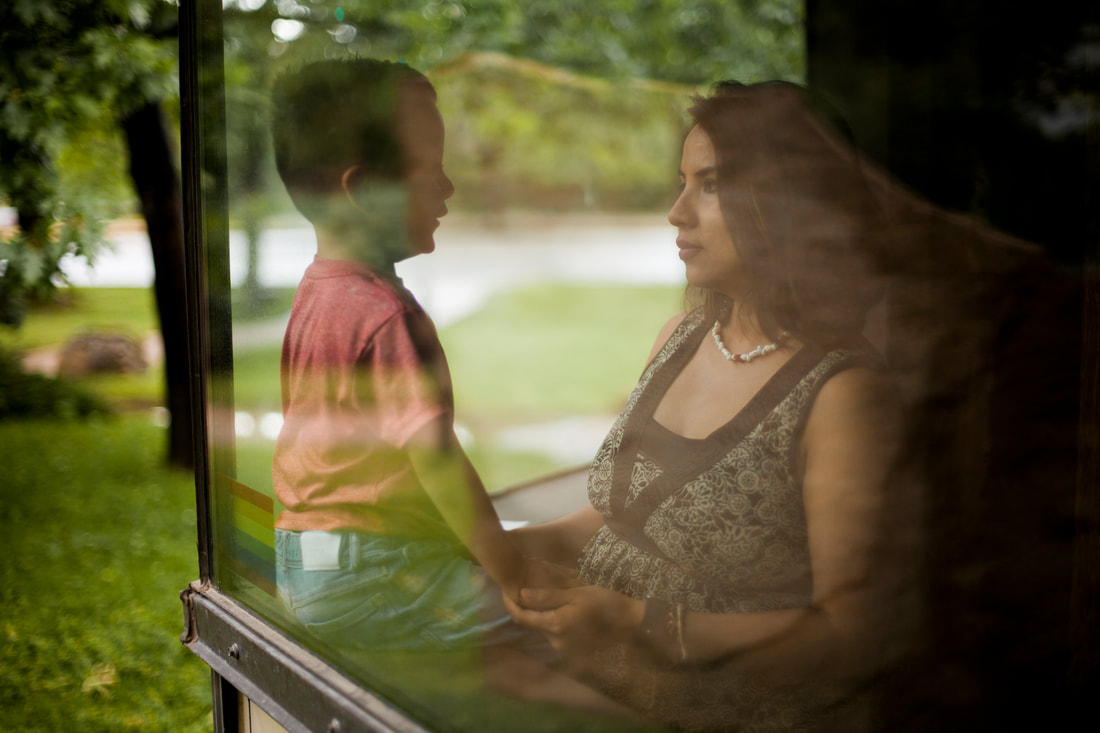 A Bay Area Filmmaker & a Film Festival with a Social Mission at Heart Of all the genres in the film industry today, none quite possibly more than any other is as misunderstood and under appreciated than the documentaries. Despite that, the filmmakers navigating this terrain persisting with unquestionable and laudable levels of commitment to get their stories out there. This type of filmmaking puts more emphasis on educating and inspiring its viewers, over entertaining audiences or pandering to studio execs. Documentaries are a powerful vehicle to spark dialogue and shine a necessary light on important issues and people. San Francisco-based filmmaker Theo Rigby knows firsthand about the challenges inherent in this profession. He is founder of INation Media, a production company with a focus on immigration issues and the immigrant experience in the U.S. Through iNation Media, Rigby gives a platform to immigrant individuals and communities to have their stories told in nuanced narratives rarely seen. Canal Alliance in San Rafael, is a nonprofit champion of immigrants who are challenged by a lack of resources and an unfamiliar environment. Sara Matson, Development Director for Canal Alliance is familiar with and very appreciative of Rigby’s work with immigrant and undocumented communities. Canal Alliance partnered with The California Film Institute to present one of his films, “Waking Dream,” last fall. She got to know him through the project and presentation. She details her impression of him as an artist and the work that he is creating. “It really comes across that he has such care and compassion for the topics that he covers and the subjects of his films. That is such an important framework to come at, and I think for the final product he creates, allows for people who view them, to see that these are complex social issues that every family is experiencing uniquely. It’s different than hearing a news reporter read data, but actually hearing how issues of immigration and policy change are impacting individuals in profound ways.” She also explains that the impact of films is two-fold, in that it’s not only important for non-immigrants or U.S. citizens to get educated about immigrants and situations, but it has special meaning to the communities depicted to see themselves reflected in art. “It’s a very powerful experience for other immigrants that are affected by these issues to see people like themselves and feel their stories are being shared to a wider audience in this way.” For much of the fifteen years he’s been working in the industry, Rigby has been developing a specific documentary called “Sanctuary Rising.” The film is an intimate portrait of two undocumented mothers who go to dramatic lengths to fend off deportation and separation from their families in the United States. It follows the stories of the two women who chose to enter sanctuary at local churches, rather than report to ICE to be deported (inationmedia.com). Although Rigby had hoped to connect with immigrants in the Bay Area that were seeking asylum, the timing didn’t quite work out. “I waited for someone to go into sanctuary in the Bay Area because it’s always easier and less expensive to work locally, if you can,” he explains. Instead, he eventually learned of a woman, Jeanette Vizguerra, that was going into sanctuary in Denver, and then subsequently another woman, also in Denver, Ingrid Latorre. Theo describes Jeanette’s initial situation. “Jeanette went in the first time for 86 days, then she got a stay of deportation for two years. The film follows her while she was out, but she was unable to get legal status within that time period, so she went back into sanctuary.” A stay of deportation is an order that refrains the Department of Homeland Security from removing an immigrant pending their visa application. Jeanette has been back in sanctuary for almost a year. Rigby has gained a lot of ground with the production of “Sanctuary Rising,” but four years and counting, the project is still not completed. Rigby says, like for other indie filmmakers, he’s come up against challenges on many levels, most especially financial obstacles. “I got a small grant early on from the now defunct Hartley Film Foundation, and then I won the California Film Institute’s DocPitch award in 2016. Since then I’ve been self-funding the film, doing it on a shoestring budget, filming everything myself, with some help from interns.” According to the International Documentary Association website, budgets for independent projects can vary greatly. Some projects only raise $10-20k to cover basic hard costs, and others are only ever partially funded, and involve huge contributions of volunteer labor and services. A cluster of funded docs end up in the $350-450k range, although even this range often relies on either a small number of shooting days, a producer/director/writer/cinematographer/editor wearing many hats herself, or various unfunded phases of the process. There is another cluster in the $600-800k range (2019). The “Premium Beat” website attributes much of a documentary filmmaker’s costs to equipment rental and/or purchase, professional labor such as cameral operators, lighting and sound crews and post-production costs, such as video editing and sound mixing. For example of just two of very many expense, the best five cameras recommended to independent filmmakers to purchase range in cost from $1,300 to $6,000. According to wideawakefilms.com, A professional editor will usually cost $1,000 to $2,500 per day, depending on the experience of the editor, the quality of the work as well as the amount of editorial control that you feel you need over the project (Jan. 2019). Helping to bridge some of the financial gap while also giving exposure to worthwhile projects like “Sanctuary Rising,” are film festivals and pitch sessions. Of the nearly three thousand film festivals worldwide, many have come to recognize the relevance of the documentary genre. Some festivals even dedicate documentary segments to the overall program. One such festival and organization is in the heart of the Bay Area. Not only are documentaries an integral aspect of the annual Mill Valley Film Festival (MVFF), but the California Film Institute, the nonprofit agency that curates MVFF, holds a separate annual documentary film festival called DocLands. Separate from DocLands festival, but presented during the festival, is DocPitch, which gives a platform to filmmakers looking to further or complete their projects. Organizers select filmmakers with feature-length documentary projects “in development.” indiefilmhustle.com explains what that term means: In development, a preliminary budget is made, key cast are attached, key creatives are chosen, main locations scouted and multiple script drafts may be written. ... Green-lighting a film means the studio has approved the idea and will finance the project and move into production.(Nov 22, 2019). For DocPitch, participants are expected to give a verbal pitch, present a trailer, and participate in a Q&A with the audience. The audience is comprised of funders, festival representatives, distributors, broadcasters and the general public. All of whom get to select their favorite projects/pitches. Of the 500 entries DocPitch draws, the jury has to narrow the selection down to just five. DocLands Director of Programming, Joni Cooper, explains the selection process and jury mindset. “Quite simply, the jury is looking for a good story told well. One that is unique in its content or vision. Does it invoke emotion or resonate at a deeper level? Is the filmmaker uniquely suited to tell the story or have special access? If it’s a timely story, does the filmmaker have the experience to see it to conclusion? Does the story leave the viewer wanting to know more?” As previously mentioned, Rigby participated in DocPitch a few years ago and won. He underscores the value of pitch sessions in general, and his DocPitch experience specifically. “It’s incredibly helpful, he admits. “The year I won was the first year of DocPitch, and the prize was five thousand dollars. That’s not a lot, but it certainly is helpful. Over the years, I think the organizers realized what is most helpful is getting the contestants more money. As a result, they have increased the cash prize to 25 thousand dollars this year, which is amazing!” Rigby asserts that an increase of that amount can really make a difference. Filmmakers and festival organizers alike realize the importance of festival exposure, especially for the independent directors and documentarians. Organizers, such as those at the MVFF/DocLands are sympathetic to the challenges of these independent filmmakers and the vital role of documentary stories to have a platform. Mark Fishkin, Founder / Executive Director, California Film Institute expounds on the organization’s commitment. “Everyday we are bombarded with “breaking news” stories and a never-ending wall of soundbites. However important these stories may be to our lives, they often feel like they are given the same weight and shoehorned into a never — ending news cycle. All of CFI’s documentary programming allows these important stories to be experienced in depth, whether at the Rafael, MVFF, through CFI Education or DocLands. Stories that can both enlighten and entertain us. In these ways documentaries provide a way of seeing and hearing the world and can give us a deeper perspective of critical issues and a greater appreciation for the “wonderland,” that still surrounds us. Real stories, that touch us, at our core.” Joni Cooper agrees with her colleague, adding her take on the role and responsibility of film festivals. “Festivals can provide huge buzz for films. They get audiences talking, sometimes yelling--whether out of joy, frustration, or outrage – about the films that touched or resonated with them about issues that bind us together through shared human experience. Word travels fast through social media, especially authentic and passionate word.” As challenging and sometimes disheartening as the process can be for filmmakers like Rigby, they never seem to lose sight of the big picture as well as the satisfaction of conveying meaningful stories versus personal sacrifice. It is in that selfless spirit that they continue to create, educate and inspire. Working hand in hand with them are agencies, like DocLands Documentary Film Festival to promote domestic and global stories and storytellers. This year’s DocLands Film Festival has been postponed. Go to the website for reschedule details. www.doclands.com To learn more about Theo Rigby’s documentary project, follow its progress or to support the film go to http://inationmedia.com/sanctuary/ For details on the mission and accomplishments of Canal Alliance, go to their website at canalalliance.org or call 415.454.2640 From Genocide Refugee to Inspiring Advocate: Her Story Should Be Read ... and Heard
When Rwandan refugee-turn critically acclaimed memoirist, Clemantine (pronounced Clem-en-teen) Wamariya arrived at Book Passage in Corte Madera, California. one sun soaked, lazy Wednesday evening, the energy level throughout the store took a noticeable upward surge. Firstly, she didn’t just walk in. With a beaming smile and a prance in her step, she unabashedly and eagerly began taking photos with the display of her books and sign, making it obvious she was excited and proud. Secondly, she was dressed casually, but undeniably fashion-forward, showcasing a pair of shoes and a purse that had a story all to themselves. The 30-year-old writer and activist was not content to just exchange handshakes and pleasantries with the staff and customers, she embraced each one she met and listened intently to their feedback regarding her recently released book, “The Girl Who Smiled Beads.” One gets the sense that sort of cosmic shift is probably the norm wherever this vivacious, yet humble young woman goes. Maybe given her personal history of surviving war, separation and dislocation, one expects her to be serious, sullen and beat down. Instead she defies expectations and is a friendly beacon of strength and gratitude, a breath of fresh air in the book tour circuit. In 1994, the Hutu majority government began a 100 day long bloody and senseless campaign against the minorityTutsis community. An estimated 500,000 to one million people were slaughtered and some two million people displaced. Among the displaced was Clemantine, then six years old, and her fifteen year old sister, Claire. It was at the start of the uprising when their parents scurried them away from their village to safer territory with their grandparents village in an attempt to flee the encroaching massacre. The siblings initially assumed their parents would soon join them at their grandmother’s home, but after some time, unavoidable circumstances put them on the road again. Despite long treks among thousands of others as they went from village to village, and seeking refuge in one country after another, they managed to maintain a united front, but never connecting with their parents and brother along the way. As a result, they assumed the worst had taken place. In total, they spent several years in six countries before landing in Chicago, by the time she was 12, her sister 21 and married, with children. Beginning our “In Conversation” style presentation I had little, if any, preconceptions of the direction things would go, but I definitely did not expect it to commence with the docile tones of Nina Simone. Admitting to being a bit tense, Clemantine pulled out her portable speakers and selected a favorite from her musical collection. Clemantine felt confident that starting off musically would be a therapeutic way to allow herself as well as the audience to regroup, focus and relax as we all entered a tough topic. After we go from a few minutes of music and then silence, Clemantine indulges my questions pertaining of what life was like as a young refugee, going from country to country before landing in the U.S. “It’s a strange feeling to go from having a home, being part of a family, having that security, to not only being without your family and home, but being without a country.” In her book she gives a heartbreaking account of how life on the run for several years took its toll on her. “I lost track of who I was. I’d become a negative, a receptacle of need. I was hungry, I was thirsty, I needed a bathroom, I needed a place to sleep ... You had to try to hang on to your name, though nobody cared about your name. You had to try to stay a person. You had to try not to become invisible.” Throughout the book, Clemantine goes from flashbacks of the different phases in her young life, commenting as much on the vulnerability of memory as any social or political issues. This includes her life before the genocide, fleeing her war-torn homeland and the first several years in America. Each aspect is vivid and achingly personal, and although her life was full of challenges that most of us will never come close to experiencing, her story never comes across as depressing. It is raw, real, and yes, sometimes harsh, but it is humane and courageous, a truth worth telling and reading. Her ability to rely on her inner strength and ambitions, as well as the kindness of others, permeates the pages and inspires the reader. A great example of this is when Mrs. Kline, the friend of her American mother, takes her shopping for school clothes. “I did not know how much I was broadcasting my pain, how obvious it was to Mrs. Kline that I needed help loving myself. I tried on the clothes thinking, uncharitably, ‘this is nice, but why should I care?’ But the truth is I needed Mrs. Kline. I needed the confidence and positivity she wanted to instill in me.” While in Chicago with her American family, she and her sister were eventually reunited with her parents and brother as it was famously broadcast on The Oprah Winfrey Show, for better or worse. Although Clementine was beyond grateful for the reunion, their time together, post broadcast, was a whirlwind weekend filled with awkward moments and understandably conflicting emotions before her family returned to Rwanda. Since then, Clemantine has maintained contact with her family, having a couple of occasions to travel back to her homeland. As she grew in American and grew in confidence, she soared academically, ultimately getting accepted into and attending Yale University. It was while there, that she was invited to participate in an outreach project in Rwanda. To return to her past was difficult, she faced the challenge and prevailed. Later, she would be appointed to the Board of the Holocaust Museum by President Obama, and even join a delegation from the museum to go to Rwanda for a memorial in honor of the genocide’s twentieth anniversary. Since graduating, Clemantine fell in love with the San Francisco Bay Area and its resemblance to her native land, with it’s bucolic setting of rolling hills. She lives in the area full time where she continues to write, fulfill public speaking engagements, participates on boards and delegations as a refugee/immigrant advocate. She unabashedly enjoys downtime when she isn’t traveling and promoting the book. Speaking of books, she referenced Elie Wiesel’s “Night,” of which she’s read numerous times while presenting at Book Passage. She has not only met Wiesel on several occasions, but has had the honor of introducing him for a special event at the Holocaust Museum in Washington. She described her connection to Wiesel and his widely influential book while at Book Passage and for Medium.com. “My copy of Night is dog-eared. The pages are filled with plastic colored “flags” that are blue, green, purple, and yellow. Vocabulary is in the margins; phrases and sentences are underlined, some with pencil, and some with pen. Many words are circled. At the end of every chapter, I asked Mr. Wiesel questions, never suspecting that someday I would get to ask them of him in person. My English teacher’s email address and home telephone number are on a post-it note inside the back cover for when I needed help. A recent addition is a note from Professor Elie Wiesel himself. I still remember where I was sitting when I first opened Night. I hung on to every word in the text. I also remember shutting the door to my bedroom. It was past midnight (way past my bedtime) and I wanted to keep on reading. I stayed up all night reading, crying, and not believing that I had found a language that expressed what I had been feeling for many years, telling of experiences that my sister and I tragically knew so well, but had not shared with each other or anyone for ten years. “The days were like nights, and the nights left the dregs of their darkness in our souls….” The book’s title, “The Girl Who Smiled Beads” refers to stringing the pieces of Clemantine’s memory in the right light, the right order. If done correctly she believes she can create a “narrative that is beautiful and makes sense.” For those of us, fortunate to experience this story through reading it, we are changed and enlightened. And even more so if we witness her energy and light through meeting Clemantine and hearing her present her story and her life in progress. She had successfully infected us all with the vital realization of how memory shapes our present and future. No matter how difficult to face, the results of embracing the past are rewarding. By night’s end, we were all smiling beads. Photos of Clemantine courtesy of Julia Zave- juliazavephotography.com Clemantine Wamariya- clemantine.org Mixing It Up & Mesmerizing with Robert Rauschenberg at SFMoMA Since the San Francisco Museum of Modern Art (SFMoMA) reopened its doors a year and a half ago, showcasing a substantial transformation, it has rivaled all of its museum counterparts throughout the country, including the New York Museum of Modern Art. Beyond the physicality of the space, which covers several floors, is large, looming and light-filled, both the permanent and rotating exhibits have been impressive and captivating, without being overwhelming. Keeping with that pattern and taking full advantage of space, the museum is launching the winter 2017 exhibit season with an extensive and special retrospective of Robert Rauschenberg’s work. This West Coast exclusive presentation, titled “Robert Rauschenberg: Erasing the Rules,” includes an eclectic and voluminous array of work amassed from the artists 60-year career. When Rauschenberg came on the scene, he redefined what art could be, refusing to be confined to a single medium or style. He relocated from Texas to New York early in his career in 1949. At that time in New York, Abstract Expressionism was prevalent. It was a movement that reflected boldness, broad strokes and the emotion of the artist. While Rauschenberg appreciated the style and was clearly influenced by it, he was determined not to be limited to it or defined by it. He wanted to reflect the new world he inhabited. All the elements in his environment, social circles and dealings with fellow artists, played a great part in who he became as an artist and what he produced. He cherished the sights and sounds of the big city, and unabashedly presented it in his work. Paper, metals, mirrors, liquids, wood; painting, photography, video and sound were elements that excited Rauschenberg and fed into his work. He may not have been the pioneer of such mixed art, but he quite possibly was the first to elevate to such a level of extravagance and capacity. He had an outgoing personality, a zest for life and a love for other artists, beyond painters. Never playing the part of the typical “isolated artist,” he worked out in the streets as much as the studio, if not more so. He thrived in collaborative settings and appreciated his contemporaries including Willem de Kooning and Jasper Johns. It wasn’t enough to put paint to canvas, he incorporated dance, sounds and found objects to his art. Politics and social issues found their way into much of his work, and he proved to be ahead of his time, with an unrivaled talent to fuse art and technology as early as 1967. Subtlety and restraint were not in his wheelhouse, and a fear of criticism did not determine his artistic endeavors. This mixing and meshing, and wild, yet carefully executed presentation saturated Rauschenberg’s mindset and became the demarkation of his style. All of this is on full display at SFMoMA current exhibit. Large in scope, the exhibit unfolds throughout 10-12 rooms, with each featuring certain types of his art. Individually and collectively the art and overall exhibit are imbued with all the energy, whimsy, color and life that is Rauschenberg. The exhibition continues by presenting key periods of the artist’s career in depth, including a gallery devoted to transfer drawings and silkscreen paintings. For the Thirty-Four Illustrations for Dante’s Inferno (1958–60), Rauschenberg clipped pictures from magazines and newspapers, illustrating Dante’s epic poem with images from contemporary American life. Rauschenberg’s merging of classical themes, art history references, contemporary politics and pop culture culminate in the silkscreen paintings, such as the vibrant Scanning (1963) and Persimmon (1964). Rauschenberg also actively explored technological innovations for his performances and artworks in the early 1960s. Collaborations with Billy Klüver and a team of engineers lead to the inclusion of embedded radios in Oracle (1962–65). For the sound-activated work Mud Muse (1968–71) the artist constructed an enormous vat of vigorously spurting and bubbling mud. Originally conceived for an exhibition in Los Angeles and inspired by a hydrothermal basin in Yellowstone National Park, this presentation marks Mud Muse’s first return to California since 1971. As a prolific artist, with a six decade long career, there’s an abundance to take in, so visitors should plan to set aside enough viewing time, especially if other exhibits will be included. Formerly presented at Tate Modern, London, and the Museum of Modern Art, New York, organizers at SFMoMA say this iteration of the exhibit “pays special tribute to SFMOMA’s close and longstanding relationship with Rauschenberg.” ROBERT RAUSCHENBERG: ERASING THE RULES is on view now through March 25, 2018. Check the museum’s website for times and cost. https://www.sfmoma.org/tickets/ Detroit’s RenaissanceAn economic rebirth spawned by a new administration is bringing both people and business back into the city by Paula Farmer 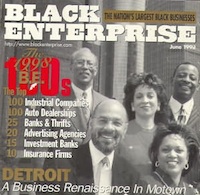 Leaving the sun and mountains of the picturesque Southwest behind him two and a half years ago, 27-year-old Derrick Martin headed to the cold and not-so-scenic northern city of Detroit. Aesthetically, many might find Martin’s move perplexing. But to the young Arizona native with a degree in communications, Detroit was the land of opportunity. It was General Motors’ former subsidiary, EDS, and the promise of engineering training that drew Martin to the Motor City. “The southwestern area of the country didn’t give me the opportunity that I needed to make the money I wanted to make,” claims Martin. “But in Detroit, with the ‘Big Three’ automakers, the doors were wide open to get into engineering.” Even with the chance to develop new skills and increase his salary, Martin was initially hesitant to make the move to Detroit because of all the negative things he’d heard about it. Now, with two and a half years under his belt as a Detroiter, Martin is pleased with his decision and would encourage others to consider making the same move. “You see more professional blacks here,” he adds, “and that gives a strong support base, broad networking avenues and refreshing social opportunities.” During the ’70s and ’80s, success stories like Martin’s would not have been told; it was a different time for Detroit, one of overwhelming challenges. Heavily dependent on the auto industry for its bread and butter, the city was hit hard when domestic auto manufacturing took a turn for the worse. Crime rose, and businesses and residents were fleeing the city for safer ground in the suburbs. Besides that, the city once known as the home of the soulful, sentimental sounds of Motown was now better known for its infamous “devil’s night” fires. Fast-forward to the late ’90s–a new era with new ideas for a new Detroit has many referring to it as the “comeback city.” For the last several years, the auto industry has been strong and healthy, churning out hefty profits-which translate into more jobs and business opportunities. The combination of generous federal grants and large urban development projects is drawing businesses and residents back inside the city’s borders. And, the isolation between Detroit and its suburbs is slowly giving way to shared interests and oneness among communities. There’s no greater demonstration of this new spirit of camaraderie than the community’s united effort to take the devil out of the pre-Halloween fires that had plagued Detroit for decades. Thousands of residents from the metro area joined forces with city residents to patrol the streets, making the arsonous eve a thing of the past. Besides making the streets safer and turning around the city’s negative image, area residents frequent the sports and ever-expanding entertainment venues downtown, while city dwellers take advantage of some of the finest retail shopping at upscale suburban shopping malls in Oakland County, one of the richest counties in the nation. Detroit is fast becoming a city to be reckoned with. And, while much of its plan still remains on paper, its mayor, Dennis Archer, has set his sights on creating a renaissance that will restore Detroit to its former glory moving into the 21 st century. BUILDING A NEW LANDSCAPE Since 1994, the city’s development successes have captured local and national attention. Detroit ranked No. 1 in a 1997 Industry Week magazine listing of world-class communities, based on its manufacturing vitality. And, Mayor Archer, a two-time president of the National Conference of Democratic Mayors, was sited by Newsweek as one of 25 U.S. mayors to watch. Archer can’t help but be proud of what his administration and a dedicated business community have accomplished. “It’s easy to recognize that the vision of Detroit becoming a world- class city is quickly becoming a reality,” says Archer. “The commitment of city government, residents, businesses and corporations to building a new Detroit has created new hope and opportunities throughout the city. While there is more work to be done, the tremendous accomplishments demonstrate that we are well on our way.” Capitalizing on the new emphasis on federal domestic policies launched by the Clinton administration, Archer ignited a spirit of collaboration among Detroit’s heavy-hitting business sector, snagging a coveted $100 million Empowerment Zone grant. In fact, the city’s success in attracting industrial development to the Empowerment Zone leads the nation, with more than $3.9 billion committed in private dollars for investment. Even small businesses such as private retail, restaurant franchises and drugstore chains, along- side corporate giants like the auto industry, have added another $2.9 billion to the coffers since 1994. Detroit-based political analyst Mario Morrow says the winds of change are blowing through the city. “The doors have opened, the money is beginning to flow in and progress is beginning to be made, thanks to city officials, the business community and many people behind the scenes.” Building a new city for the new century is no small task. But garnering support from businesses, residents and federal funding has proven easier than streamlining the city’s bureaucracy. Archer’s administration has been successful in revamping government to overcome its bureaucratic red tape. Now business permits get processed in about half the time taken previously. And Archer continues to investigate ways to reduce the income and corporate tax rate. The goal is to make living in and doing business in Detroit easier. BE 100s auto dealer Nathan Conyers, of Conyers Riverside Ford, is familiar with doing business in Detroit. Since 1970, Conyers and his family have stuck with the city through good and bad times, refusing to flee the inner city as others have done. “In the late ’60s [after the riots], there were businesses leaving Detroit in droves. We said to ourselves, ‘If we go into business, we want to be in business in Detroit,’ “recalls Conyers. “The city was experiencing some pretty tough times then, and there were fewer and fewer dealerships in central city. We came into business to provide economic opportunity for ourselves and others here in the city.” After experiencing financial rough spots through 28 years of business, Conyers’ dedication to his family business and Detroit is paying off. The oldest African American car dealership in the country is consistently turning a profit and serves as a training center for young would-be dealership owners. With his network of eight dealerships throughout metro Detroit grossing more than $500 million annually, BE 100s CEO Mei Farr, of the Mel Farr Automotive Group, knows the unique challenges for African Americans looking to do business in Detroit. He believes that with certain elements in place, it can be a great place to see business ideas take off. “To succeed on any level will take the realization and education that a good living can be made through entrepreneurship,” says Farr. But he cautions that having a reasonable business idea is often not enough. “Following desire and expertise is locating funding.” BREAKING THROUGH BARRIERS Breaking into the white male-dominated auto industry was a challenge and triumph for persistent African American men like Conyers and Farr. But how much more so for an African American woman like Geralda Dodd, CEO of the Thomas Madison Co. This BE 100s firm has steel service centers and stamping plants in Detroit andMansfield, Ohio, and is a successful–and profitable-supplier to auto manufacturers. Dodd acquired the stamping company in 1990 when it was floundering and on the brink of failure. In just seven short years, its assets have tripled and Dodd modestly claims sales of $100 million for 1997. Dodd loves the industry, which she has been in for some 20 years. And, she loves doing business in Detroit. “The economics of the city may be dominated by whites, but the politics of the city are black, and that can offer a unique sense of support,” she says. “I feel there’s room for improvement. People tend to lose focus on the need to share economic wealth, but there are great opportunities here and I couldn’t imagine being any place else.” Small business development is critical to Detroit’s economic growth. The Detroit Regional Chamber of Commerce and the Detroit Economic Growth Corp. (DEGC) offer assistance to start-up firms. The chamber is responsible for attracting business to the region. “As we uncover individuals and prospects that either have an interest in the city or in matching up well with property that may be available, we bring them into the Detroit Economic Growth Corp. and work to make that dream a reality,” says Dick Blouse Jr., president and CEO of the chamber. Ginwil Inc., a wholesale distributor of medical and surgical supplies, is one such example of a company benefiting from DEGC’s assistance. In 1996, DEGC extended a $25,000 loan to the growing supply company for equipment, furniture and working capital. Originally scheduled to be paid off in six years, the loan was paid in full within a year thanks to the improving economic climate in the area. “None of that would have been possible without the fiscal trust and financial investment the DEGC and its affiliates had made in the company’s business vision,” says Ginwil President and COO William A- A A+ E. Thompson. David L. Littman, senior vice president and chief economist for Comerica Bank, says, “In terms of business activity, things seem to have stabilized over the last three years and have begun a slow comeback, especially when you look at the valuation of property and tax returns.” To make this determination, Comerica uses a “comeback index” that consists of 23 variables including neighborhood property values, income tax and the number of permits issued for business and residential development. According to Littman, all signs point to an economic upswing: “We’ve turned the corner; the numbers are now moving higher.” The dependency index is another indicator of a city’s well-being. This index reveals the percentage of the employed population that is on welfare and the total percentage of unemployment in the city. And that ratio is down. In fact, from 1993 to 1997, the unemployment rate has dropped by half, going from 13.6% to 7.8%. The average household income for Detroit has grown by 3%, from $34,710 in 1995 to $35,748 in 1996. The city ranks 11th in income for the nation. Tyrone Miller, director of Detroit’s Board of Zoning Appeals, offers the recent surge in business and home building requests as evidence of the improved development climate in the city. “We’re really getting a lot of activity in the area of new single-family housing in existing neighborhoods,” says Miller. “The combination of community organization and a private developer will bring 60 new homes, while the overall housing values in Detroit have increased by 30%.” Market indicators suggest that Detroit is entering a period of potentially explosive growth. Within the greater downtown area, there are several million sq. ft. of office space, 15,000 housing units and an array of new retail and tourist facilities. A large part of the transformation is due to the highly anticipated creation of two new sports stadiums, three casinos and new hotels and entertainment centers. Ground has been broken for the building of a new home for the Detroit Tigers baseball team and a new dome stadium for the return of the Lions football team, who’ve spent the past 28 years at the Silverdome in suburbanPontiac. The stadium projects represent a $505 million investment; the city will contribute $85 million, with the rest of the financing coming from private investors. Not too far from the stadium area is the riverfront site for three gambling casinos and hotels to be undertaken by two gaming heavyweights, MGM Grand Hotel and Atwater Circus Circus. The third casino bid was awarded to the local partnership of Greektown and the Chippewa Indian tribe. The development and operation of the casinos and the stadiums are expected to bring millions-if not billions–to the city in taxes, create thousands of jobs and ignite tourism. Despite the seemingly bright picture, the projects and Mayor Archer have drawn criticism from some who worry whether the black community–which makes up 76% of the city’s population-will reap any benefits. One outspoken critic has been Detroit businessman and BE 100s CEO Don H. Barden of the Barden Companies Inc., whose bid to build one of the casinos was rejected by the Archer administration. Barden firmly believes that for at least one of the casinos not to be black-owned sets the community back. “Rarely in our history have we as a race been given the opportunity to determine significant participation in an industry,” he asserts. “For us not to take advantage of that is outrageous.” With most of the white community’s support and the necessary backing of the Detroit Metro AFL/CIO unions, the Archer administration defends its choices for casino contracts. Citing Barden’s financial commitments as falling short of the contract criteria, officials believe the trickle-down effect would have ended up translating into few jobs for minorities. “The important thing is that we ensure as many African Americans benefit from this venture as possible,” says the mayor’s press secretary, Greg Bowens. “Those assurances are in the development agreements because they spell out how much we want, in terms of African Americanowned businesses, to get from the casinos and stadiums.” The supplier base has to have at least 30% African American participation. Additionally, the unions have pledged training and apprenticeships to fill the demand for skilled labor throughout development. The administration believes these assurances will allow the money to be spread around rather than creating a black ownership symbol in one person. BE 100s CEO Bill Pickard, Ph.D., owner of Regal Plastics in Roseville, Michigan, is one of two general partners in the MGM Grand Hotel’s casino development project. He supports the mayor’s selection and will help to make sure that there is black participation. “I will advise and assist MGM in fulfilling the mayor’s and city council’s mandate on Detroit jobs, black contracting as well as participation in all facets of the management and ownership of the casino development project,” he says. The casinos notwithstanding, Detroit resident and radio news anchor Michael Barr, wife Candace and their seven-year-old son, Mike Jr., believe Detroit is the place to be. “The casinos’ coming to Detroit is important, but that’s just one cog in the machinery,” Barr notes. “If there was never any talk of casinos, Detroit would still thrive–you’ve got the new stadiums coming, a thriving entertainment and cultural district, and city services have improved.” Financially, the two-income Barr family has no complaints, noting that the cost of living in Detroit is very affordable in comparison to other major urban areas they once considered moving to. The Barrs say their three-bedroom bi-level house, located in a middle-income neighborhood on the city’s east side, has doubled in value since it was purchased eight years ago. Likewise, native Detroiter Irving Weaver, his wife Griselle and their daughters Melissa, nine, and Nicole, four, benefited from the city’s rising property values when they were forced to relocate to Clarkston, Michigan. When GM moved a portion of its operations north, Weaver and family followed. Not only did the couple cash in on the sale of their Detroit home, which had nearly doubled in value, but Griselle, who had previously worked for Ford Motor Co., got hired on with GM as a joint and fastener test coordinator contracted through its Modern Engineering division. As a transplanted New Yorker, Griselle views Detroit as “the smallest big city” in the world because everyone seems to be able to quickly identify people through family names and high school affiliations. She also continues to be amazed at how affordable it is to live in Detroit and the surrounding areas. “Our home is huge, with some land, which we bought for $250,000. In New York a home like this would be so expensive and unattainable for most.” The jobs and money created by the Big Three automakers is unparalleled. GM’s recent purchase of theRenaissance Center, located along the Detroit River, is expected to increase the number of employees downtown, raise tax revenues and stimulate the addition of more retail shops and restaurants. Chrysler has invested about $5 billion in Detroit since 1992, with $900 million of that in a state-of-the-art engine plant it built last year. Chrysler, the third-largest domestic automobile company, has also chosen to build its latest hot new car, the Prowler, in the Motor City. In all, Chrysler has 11,000 employees in the city, including some of the highest-paid production workers in the country. Chrysler Vice President of Government Affairs Frank Fountain says the company is committed to the economic growth of Detroit and the inclusion of African Americans in its workforce. “We believe we’re helping the mayor and others who are working hard to revitalize the city,” he says. “As a company of 125,000 employees, about 27% of our total are minorities, and a significant amount make up management personnel.” Beyond jobs, the automaker gives generous support to the Detroit community through donations to the school district and flourishing cultural center. “The philanthropic arm of the company contributes substantially to the arts, including hefty ongoing donations to the newly built Museum of African American History, the Detroit Institute of Arts and the Detroit Symphony Orchestra. Not to be outdone, Ford has contracts with approximately 20 African American suppliers in the Detroit area and recently opened up the Detroit-based UAW/Ford Training Center. DETROIT POPULATION BY RACE White 21.6% Black 75.7 American Indian/Eskimo 0.4 Asian 0.8 Other 1.5 Source: Michigan Employment Security Commission DETROIT EMPLOYMENT BY INDUSTRY Service’s 29.3% Manufacturing 21.6 Retail trade 17.7 Gov’t 12.8 Wholesale trade 5.6 Finance/ins/real estate 5.3 Transportation/comm./utilities 4.3 Construction/mining 3.6 Source: Michigan Employment Security Commission BRIDGING THE GAP Beyond city development and job opportunities lies the center of concern for most residents–quality of life. Without question, two areas that impact the quality of life in any city are crime and education. Over the years, Detroit has been brutalized in both local and national press for falling short. Now there’s evidence to suggest Detroit is taking control of its situation, cleaning house and reversing its tarnished image. New Detroit Inc. is a 30-year-old agency devoted to positive race relations through academic achievement and economic equity. The agency monitors the progress of the nation’s seventh-largest public school district. After the results are tallied, it publishes an annual report card. Project Director Robert Brown explains the results of the agency’s latest Detroit Public Schools report: “In reviewing the last 15 report cards, it’s obvious things are improving in terms of test scores. The district is still behind state averages, in some cases nationally, but the gap is closing somewhat.” Brown admits that the task before the school board is daunting considering that the district has 180,000 students and an average classroom size of 32 students. The neediness of the students is a concern as well–two-thirds come from families that live at or below poverty level. Located in the heart of the medical district near downtown, the Detroit Children’s Center is a private, nonprofit organization that has been in existence since 1929 to meet the expanding and rapidly changing needs of Detroit children and their families. Grenae Dudley, deputy director of programs, says the center’s commitment to the community is strong. “We’ve had a lot of opportunities to move outside of the city, but this is our home. We have recently strengthened our commitment to the community by building a $7 million building, and we are continuing to do capital renovations in the area to establish our programs.” The center provides over 20 programs ranging from an incarcerated pregnant women’s group to general foster care. “We have mental health services in two schools,” says Dudley, “and our Detroit Abstinence Partnership is in 20 schools promoting the importance of sexual, tobacco and drug abstinence for students nine- to 14-years-old. Agencies like the Children’s Center and New Detroit contribute to the improvement of school districts. The 4,100 officer Detroit Police Department also boasts great strides in crime reduction. In the last four years, there has been a significant decrease in all major crime areas including the number of youth homicides, which dropped by half. Through a newly organized carjacking task force, carjackings have decreased by half in the last four years as well. Part of the credit for crime reduction is due to the leadership of the department’s chief, Isaiah McKinnon, Ph.D., one of the few African American top cops in the nation. During McKinnon’s tenure several task forces have been developed and 380 additional police have been put back on the streets to combat crime. McKinnon believes the Detroit Police Department ranks with the best in the nation. “The higher echelon of the DPD are the most integrated, educated and trained in the country,” McKinnon declares. The department has put heavy emphasis on community policing, and officers can frequently be seen patrolling on foot, bike or horseback and maintaining a presence in and around schools. After decades of economic decline and urban flight, the city of Detroit is being renewed with a contagious spirit of enthusiasm. With political leadership and aggressive development under way, it’s in a unique position to offer business opportunities to its residents and those considering a change. As a result, metro Detroit is on its way to earning world-class status and serving as a hotbed of opportunities for African Americans. |
AuthorPaula Farmer Archives
September 2022
Categories |
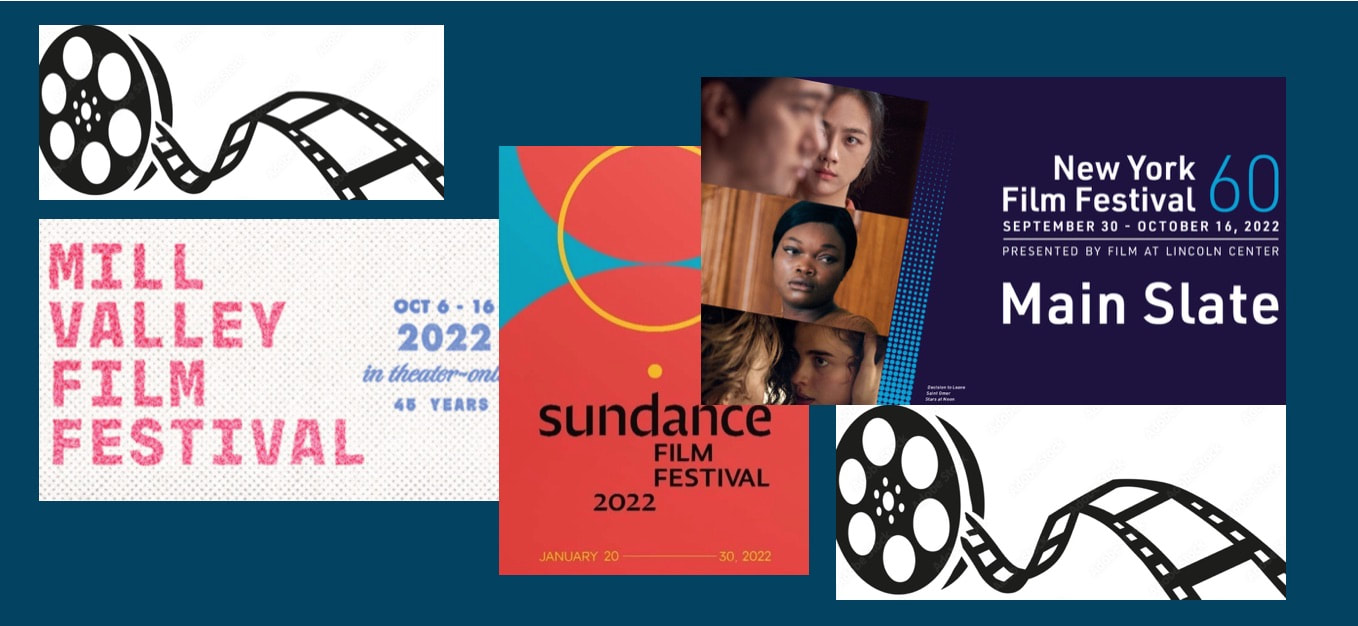
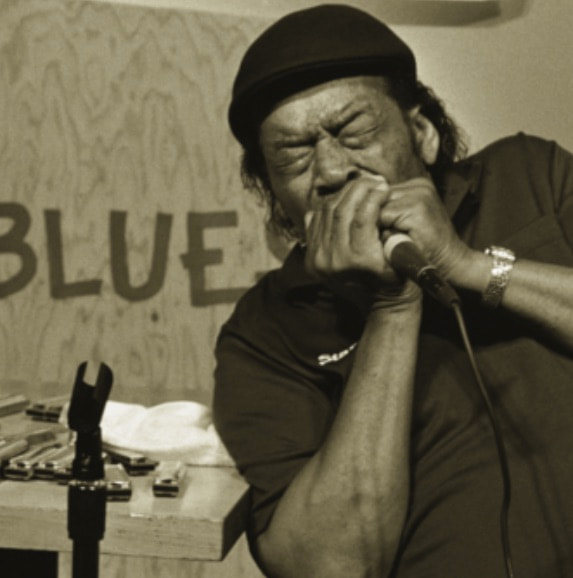
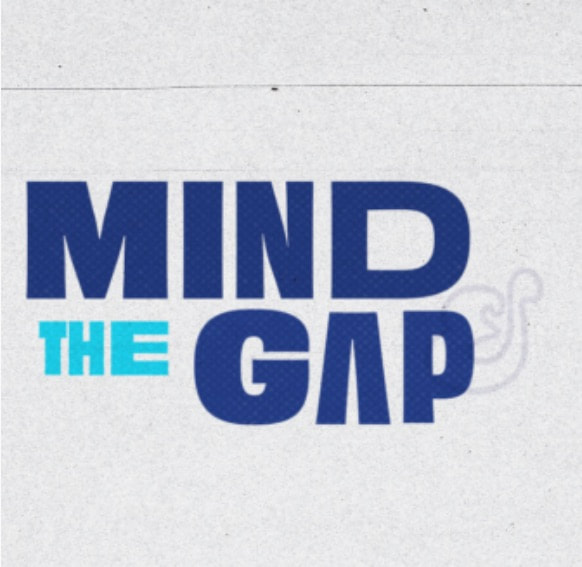
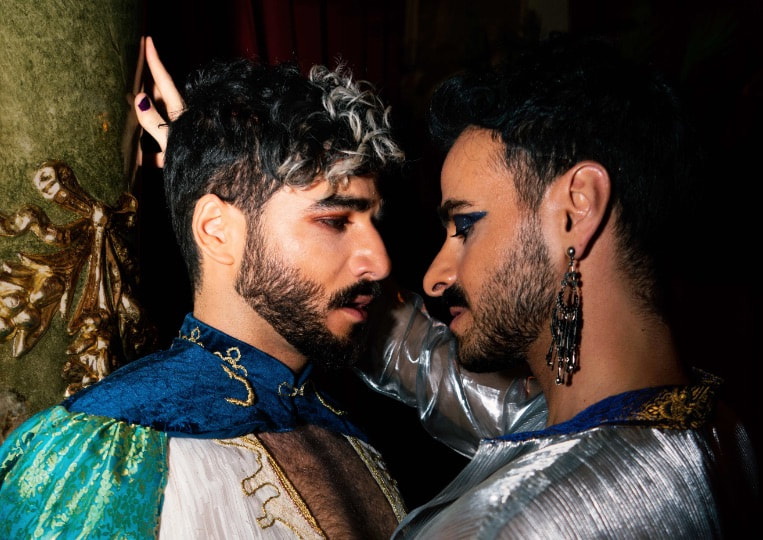
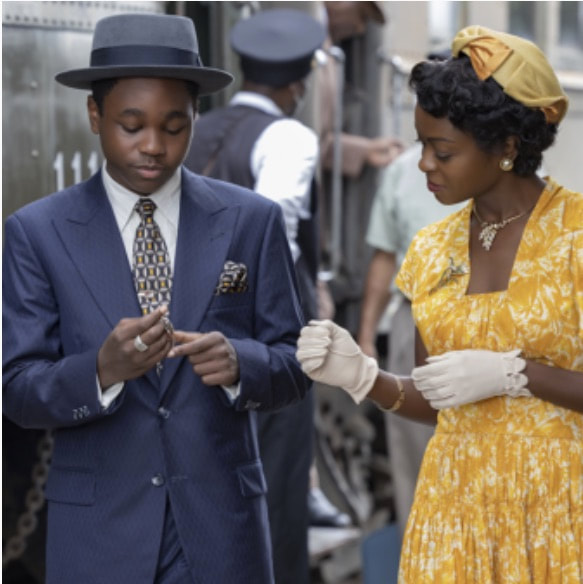


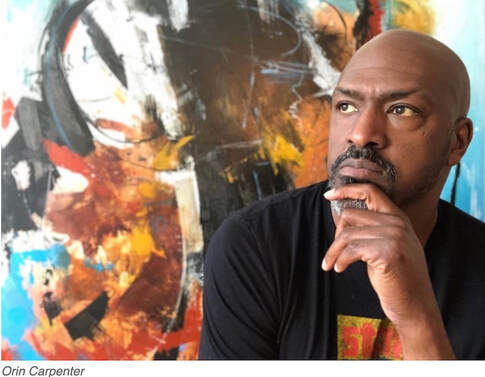
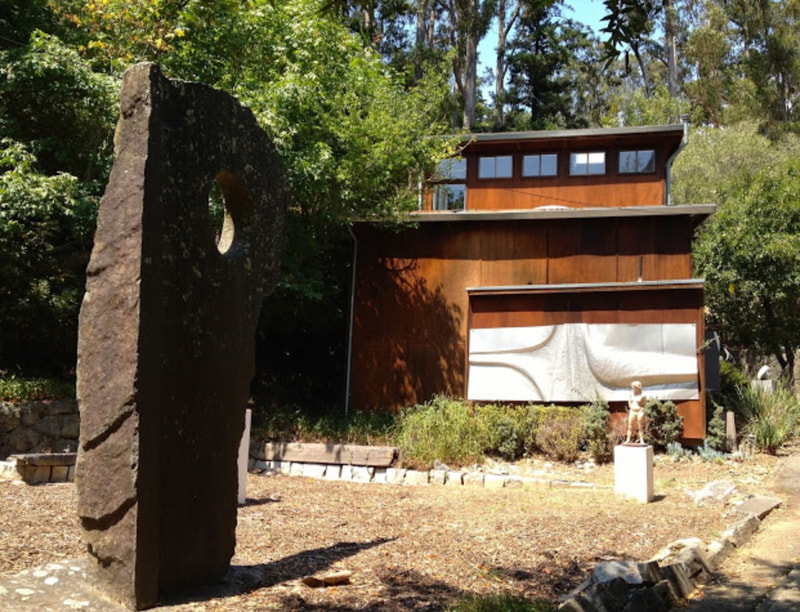
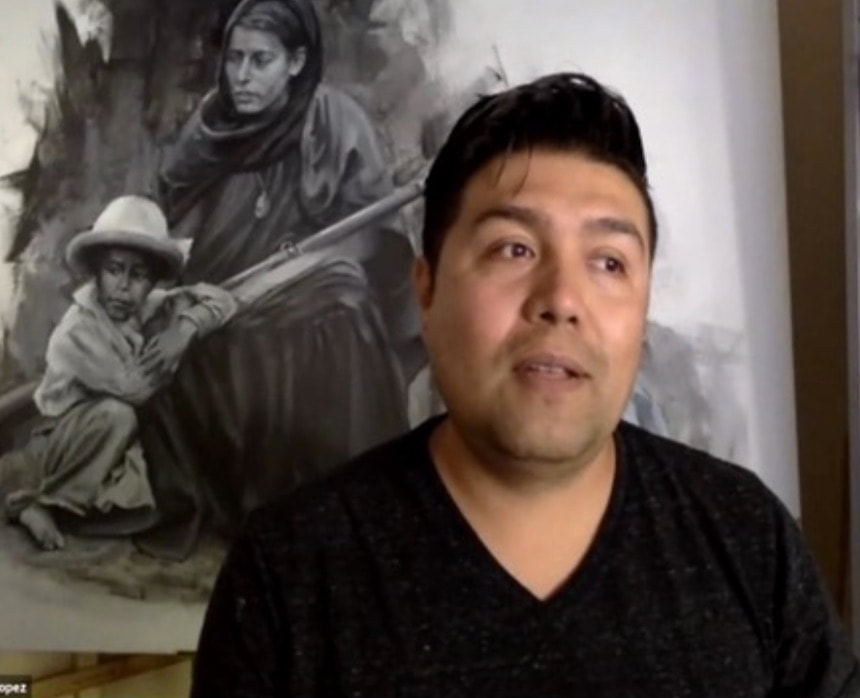
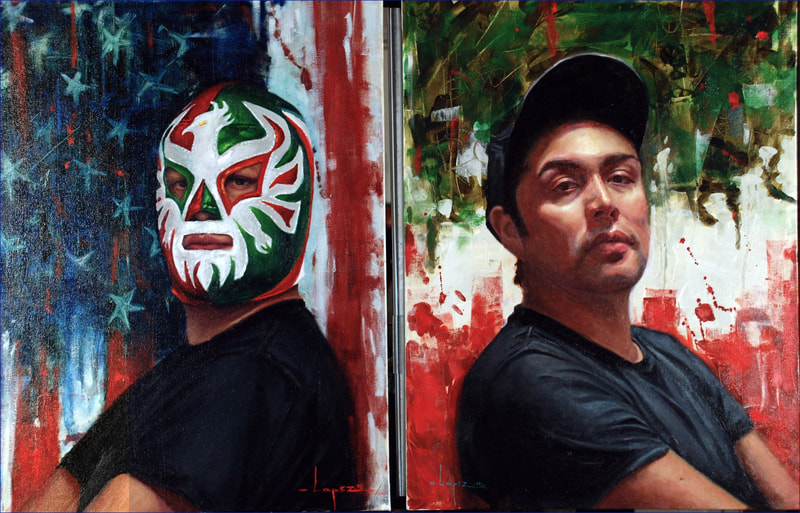
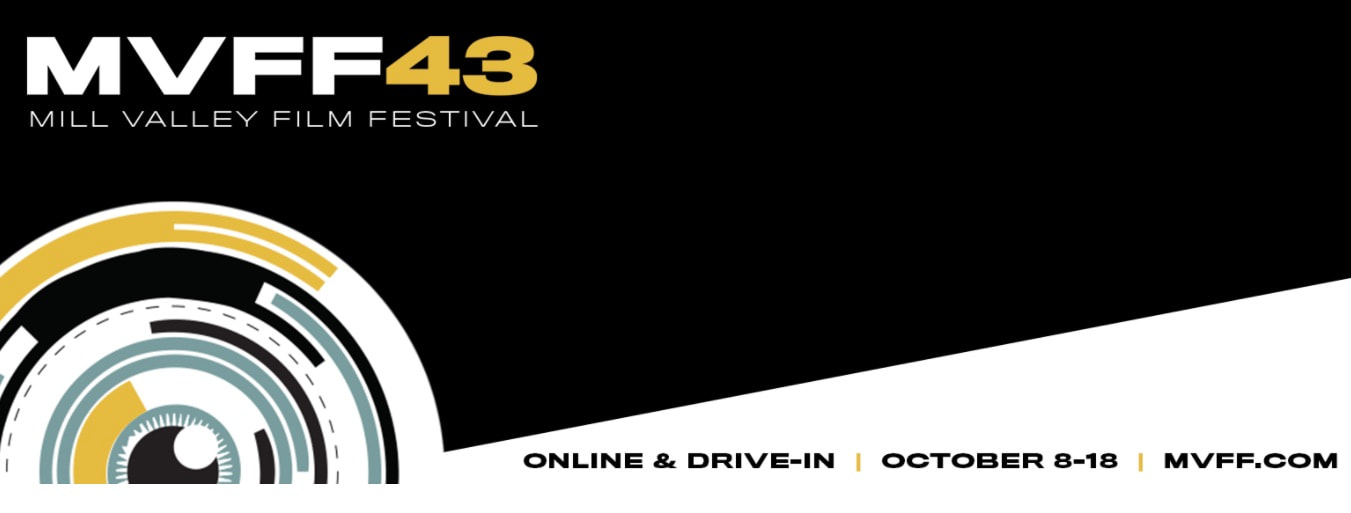
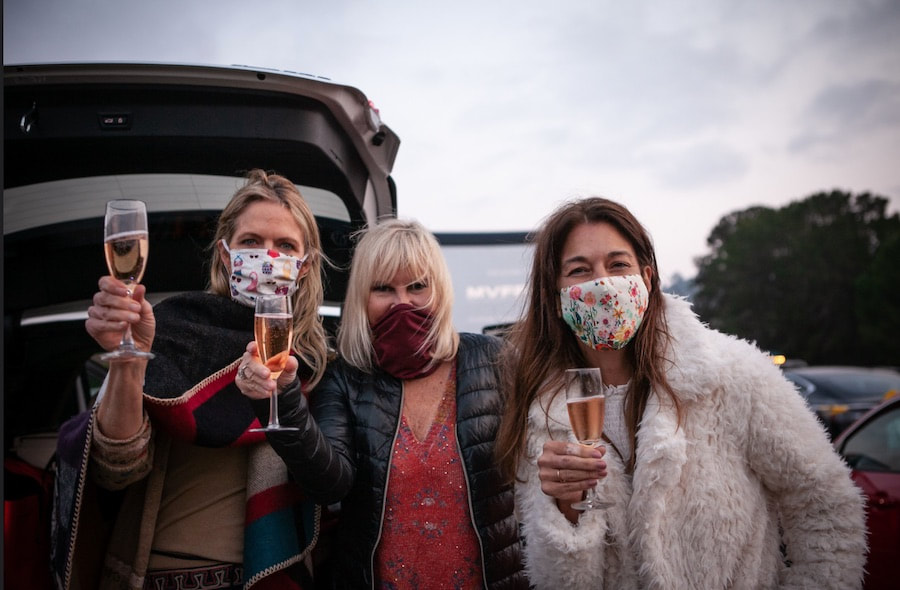
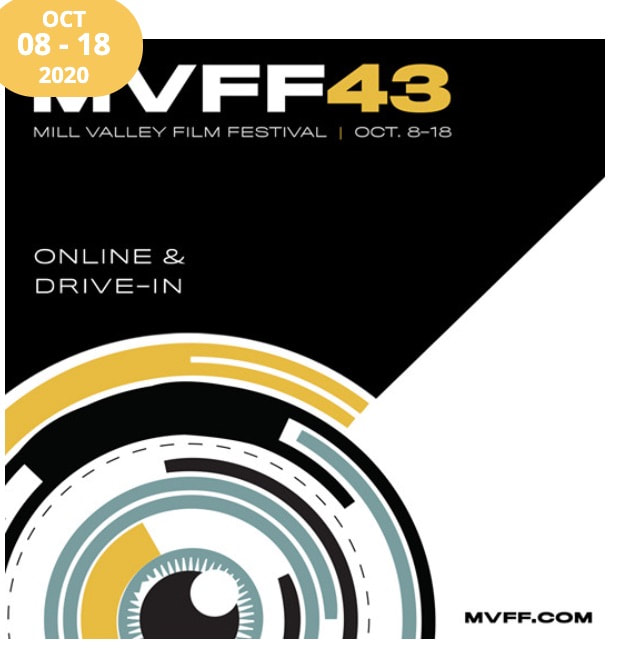
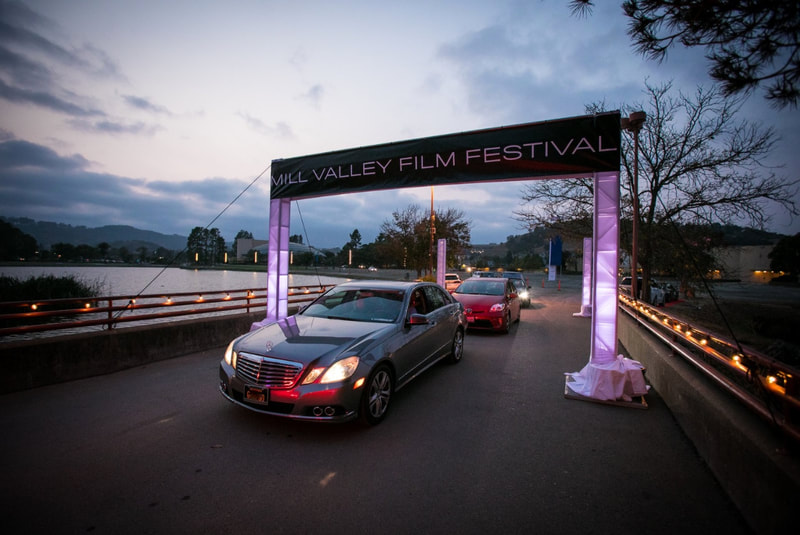
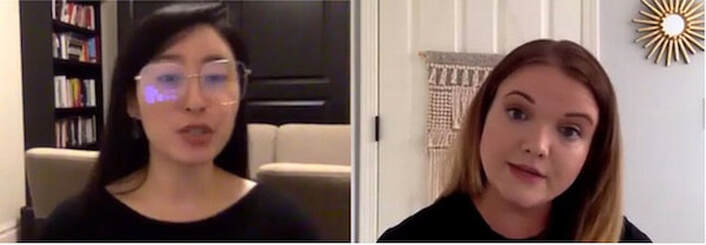
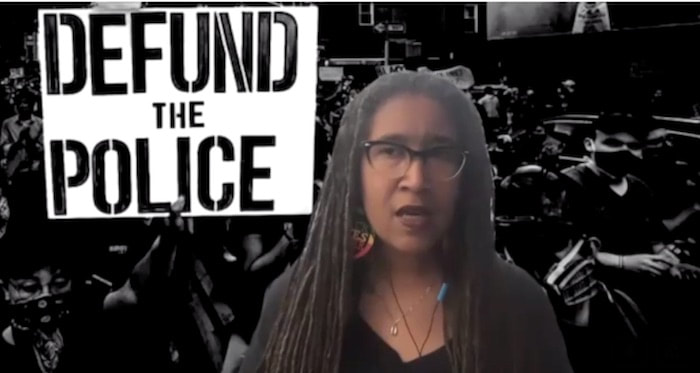
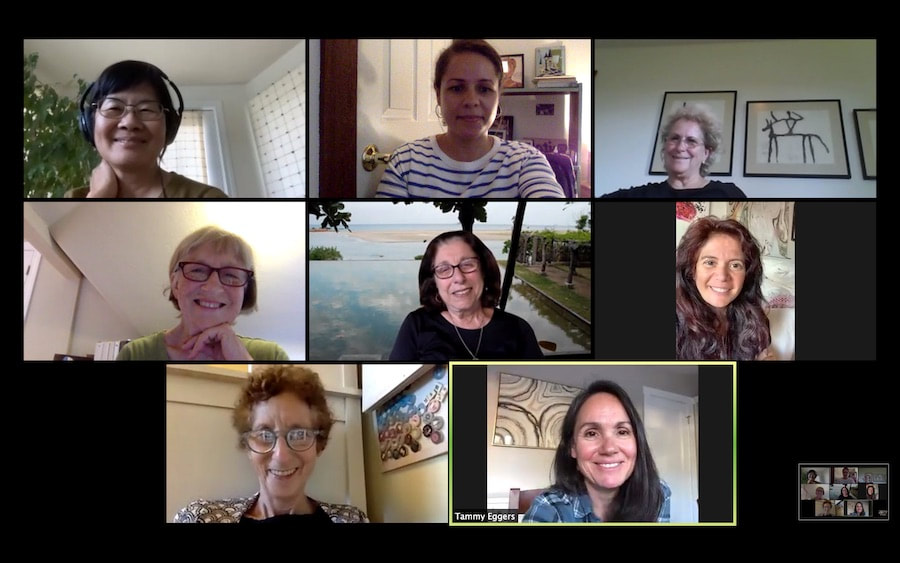
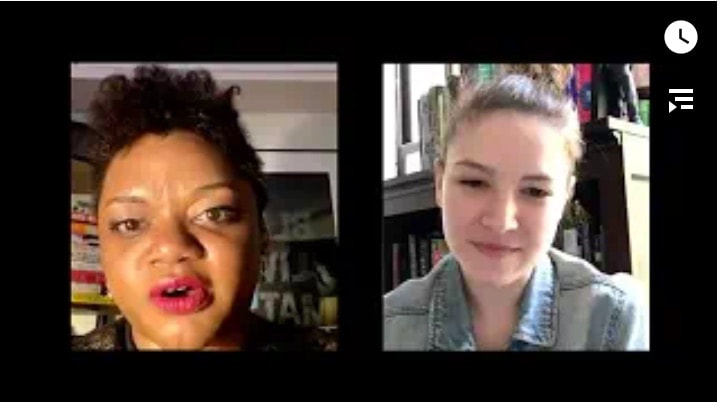
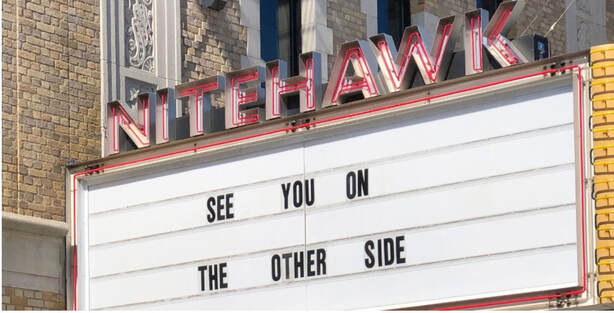
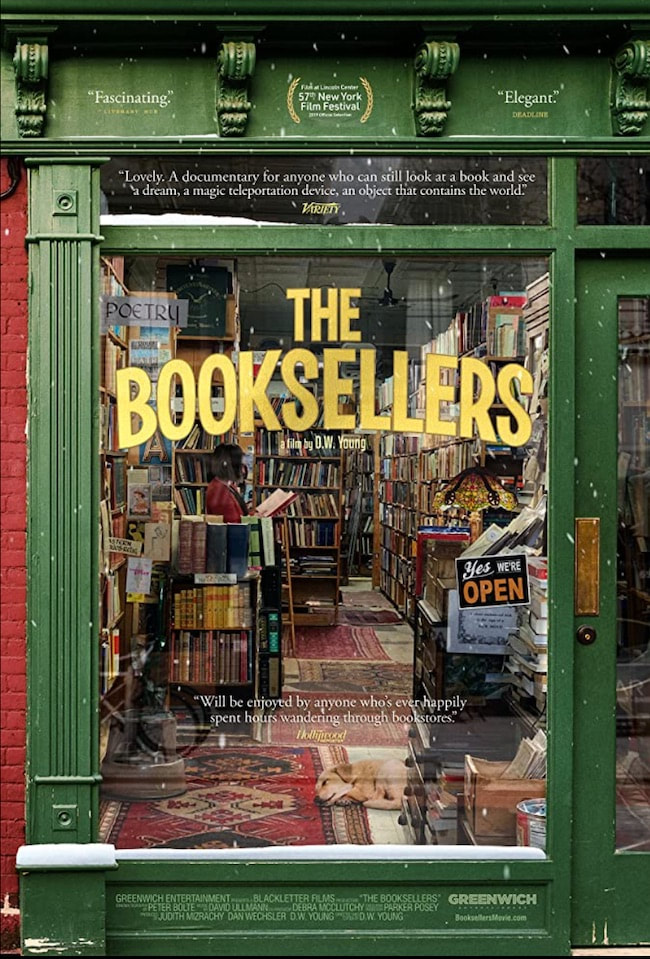
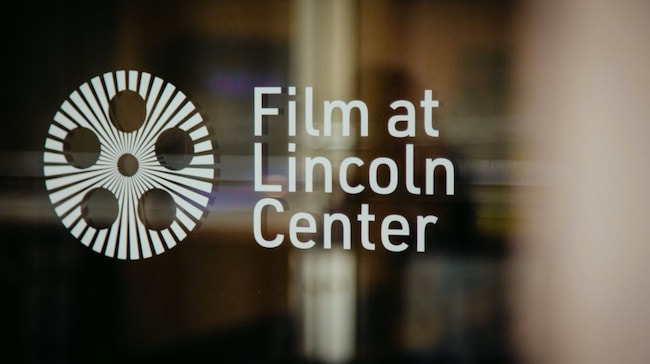
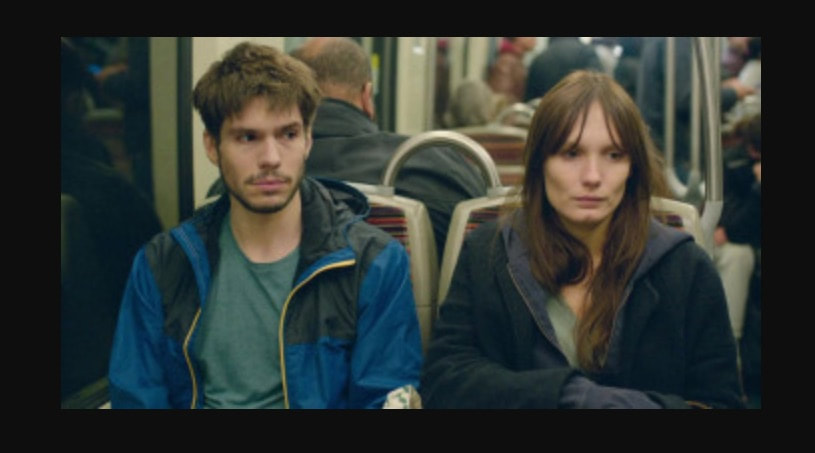
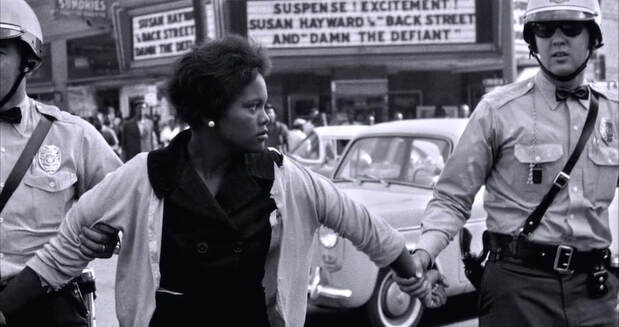
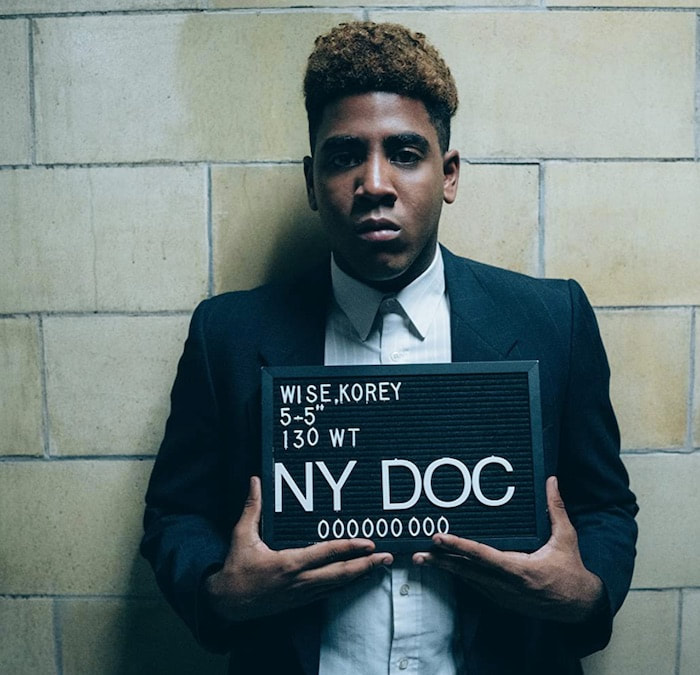
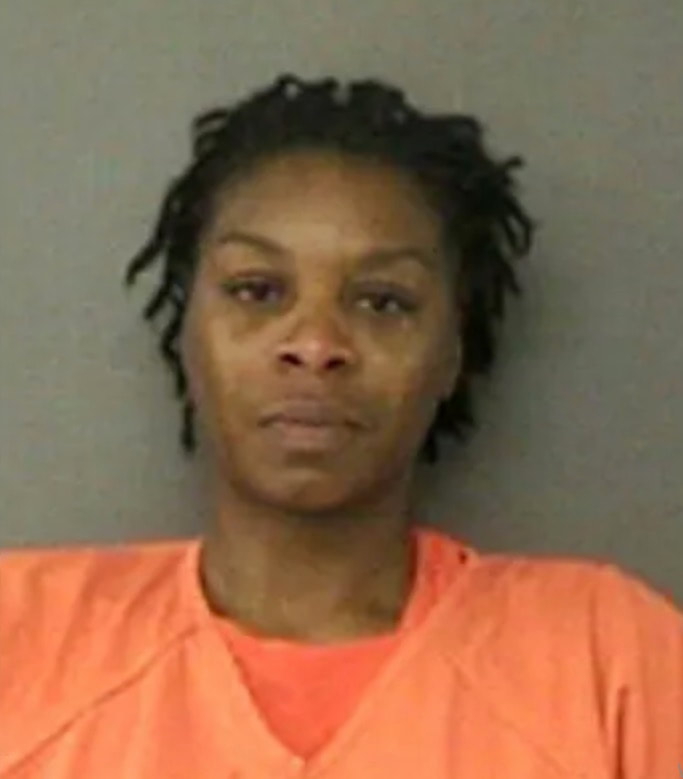
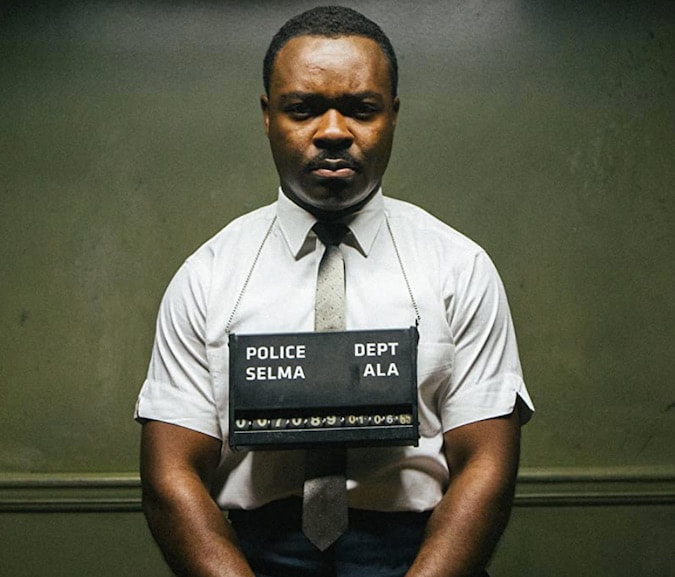

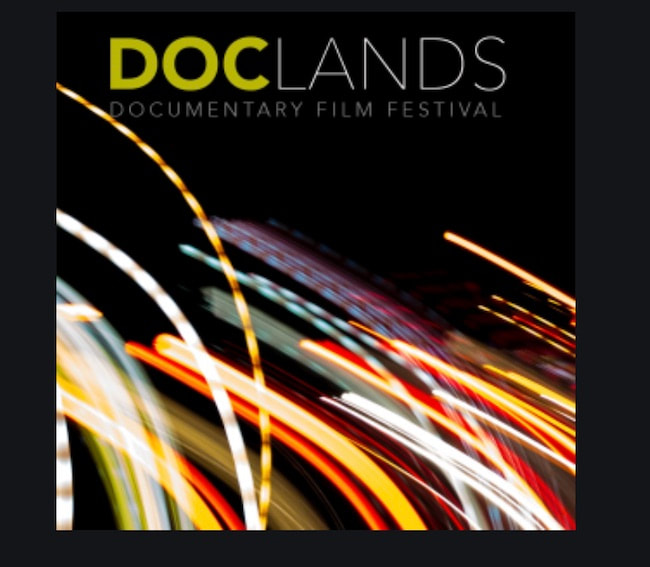
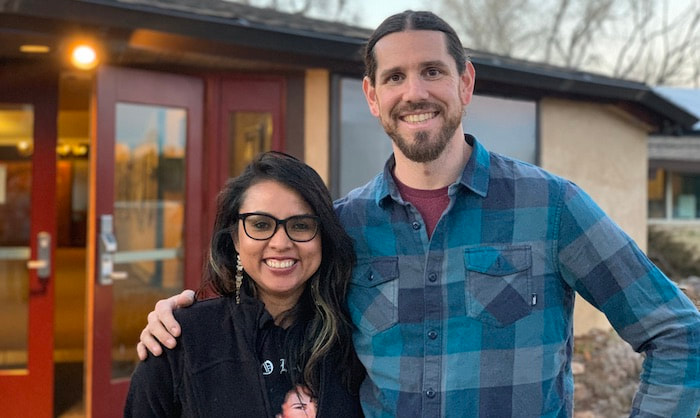
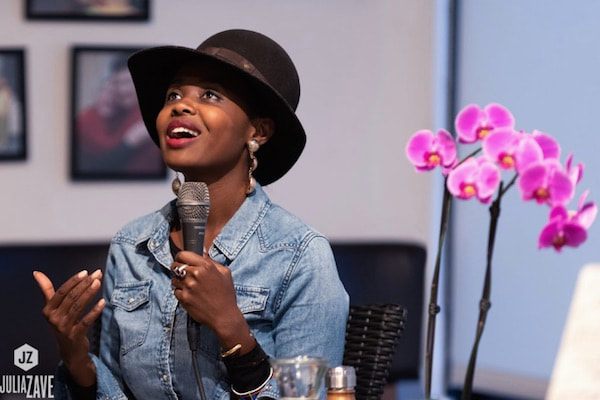
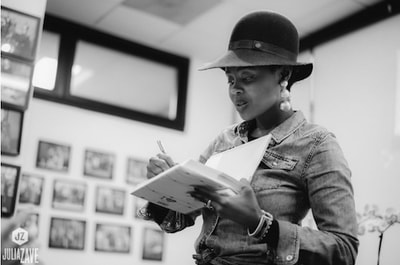
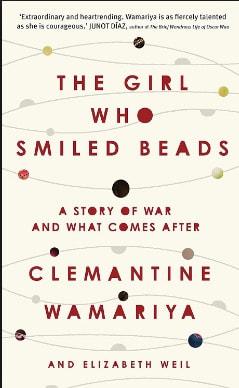
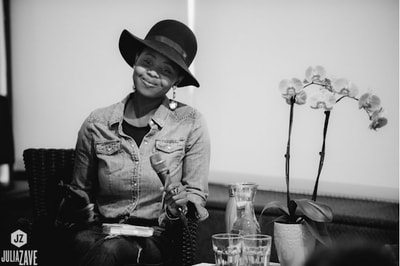

 RSS Feed
RSS Feed